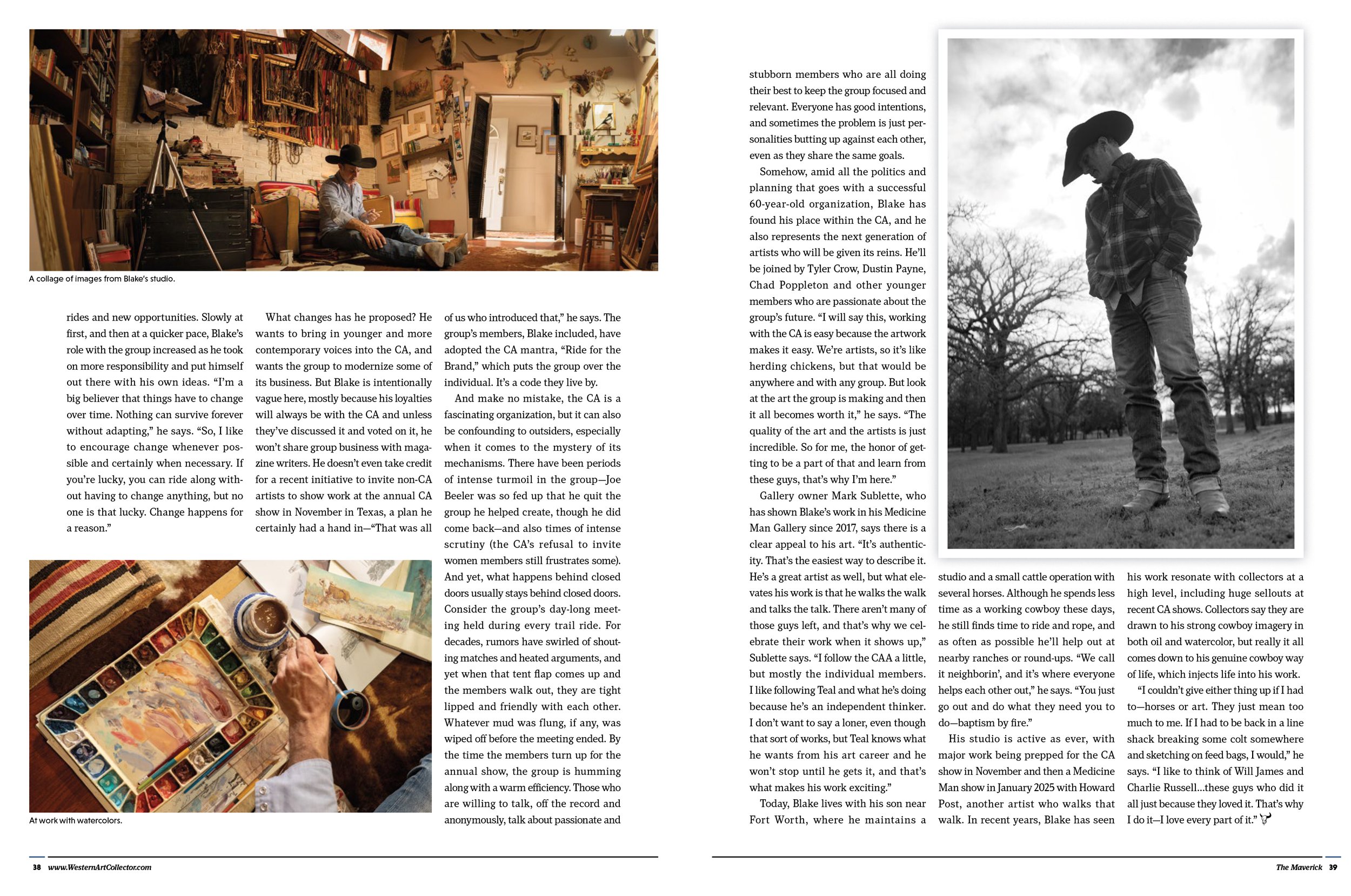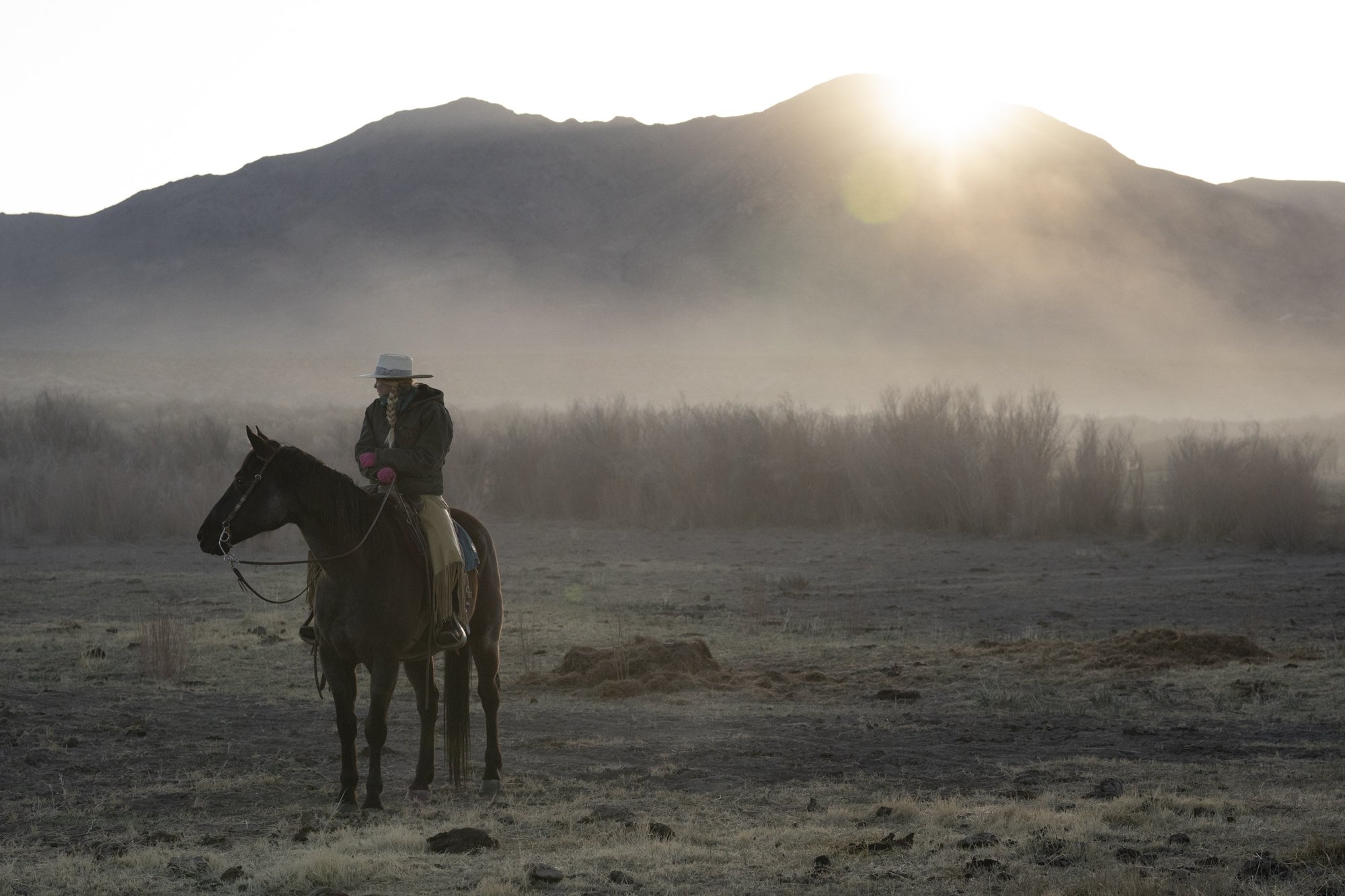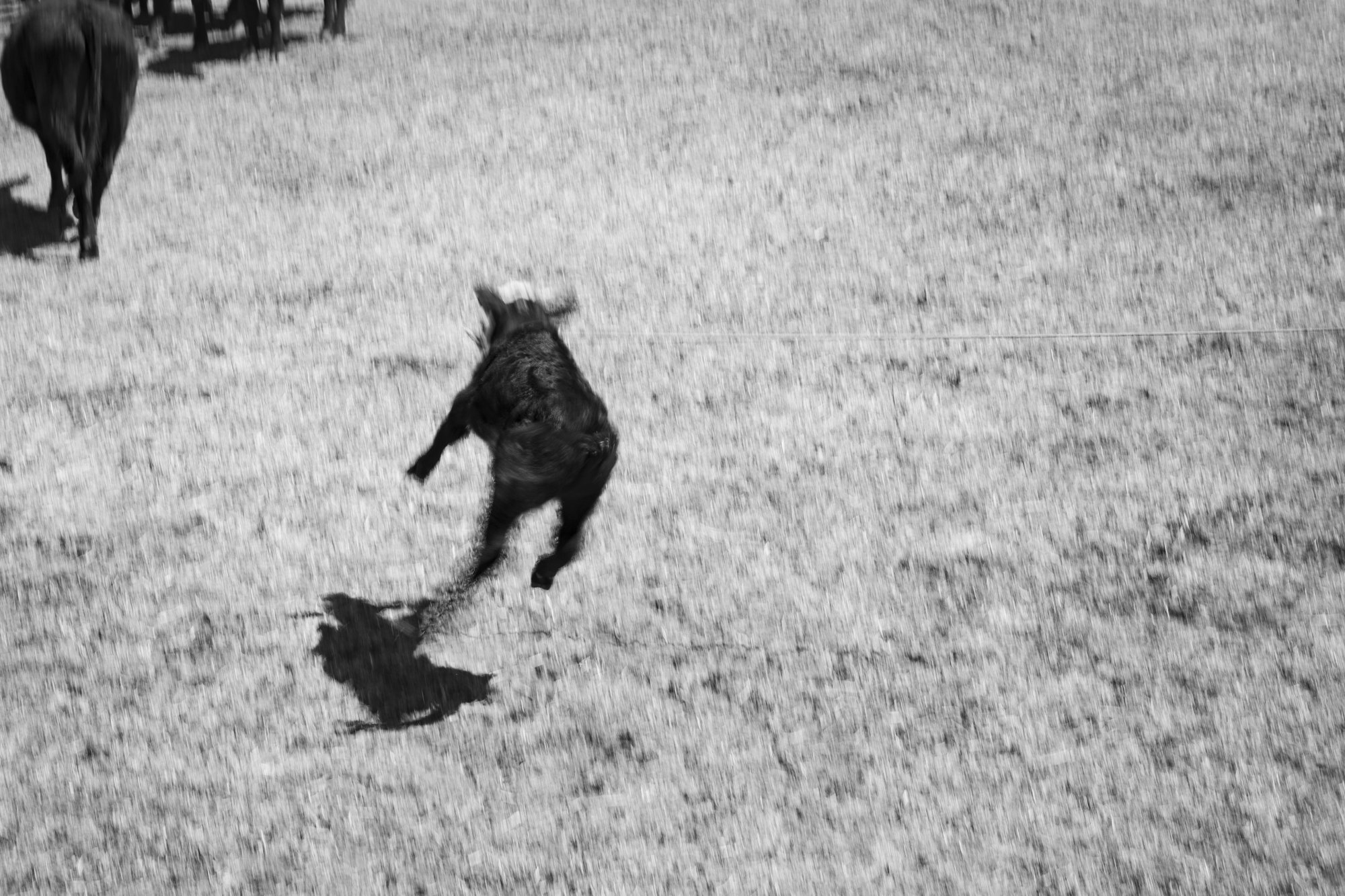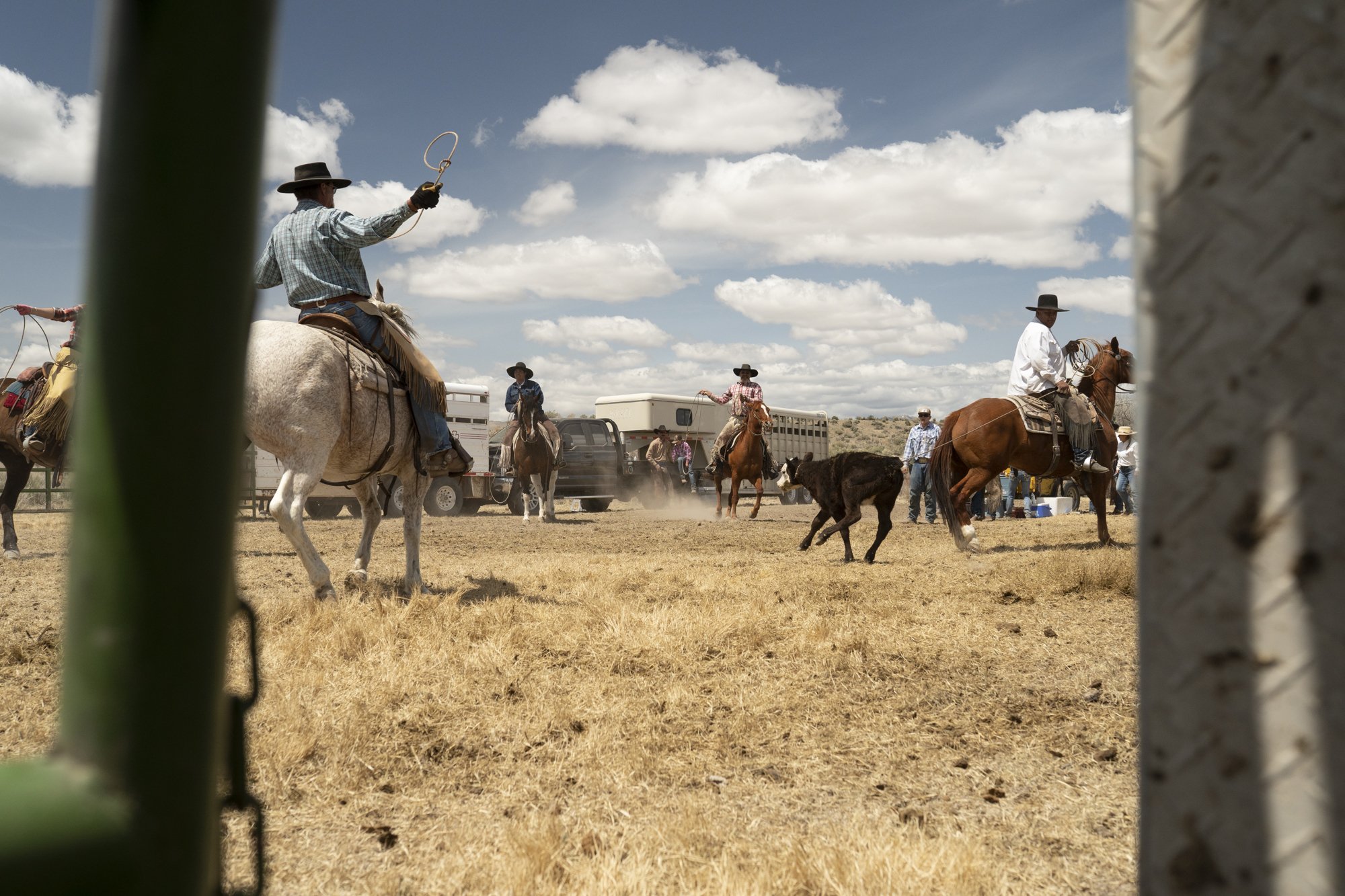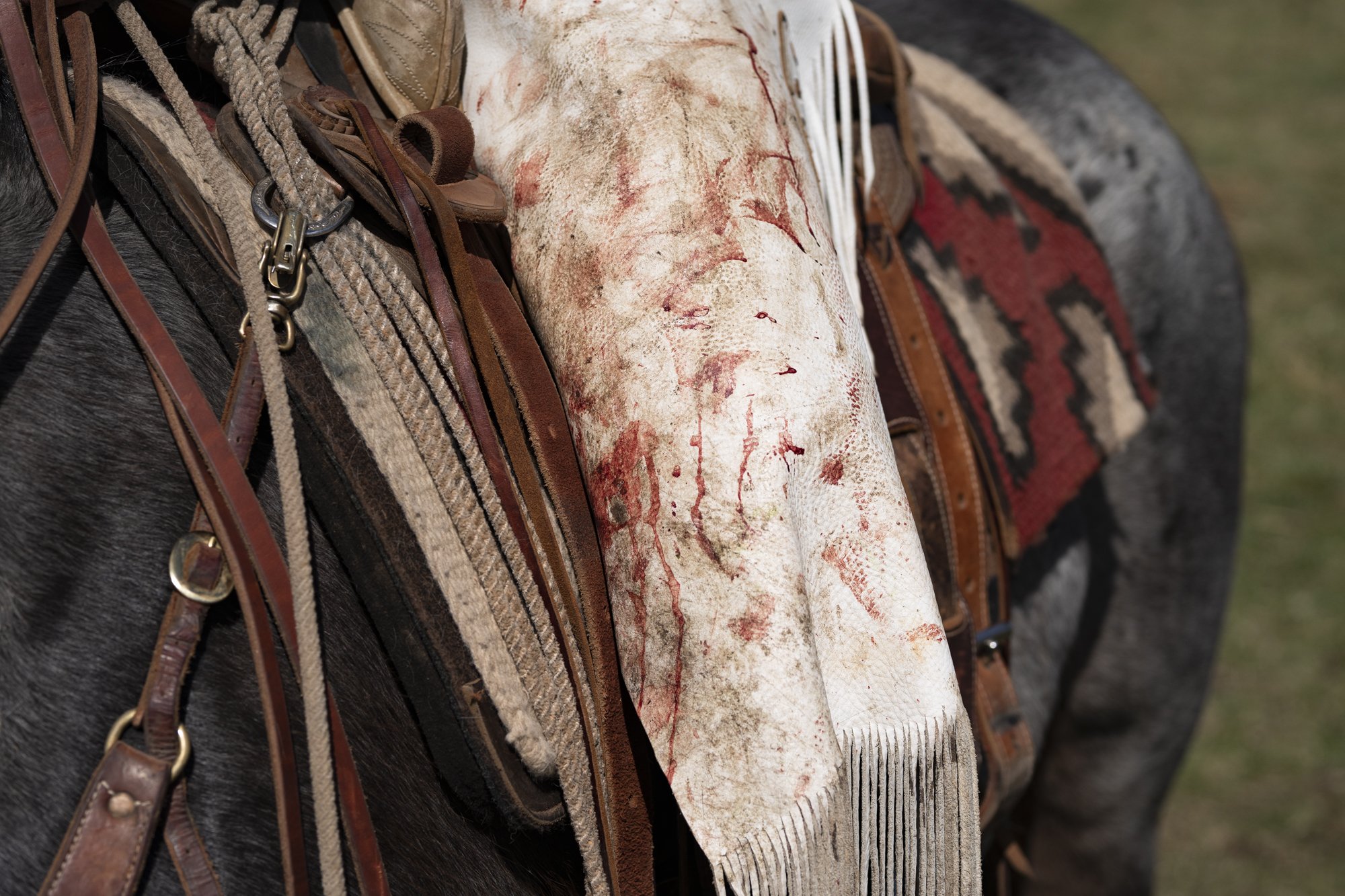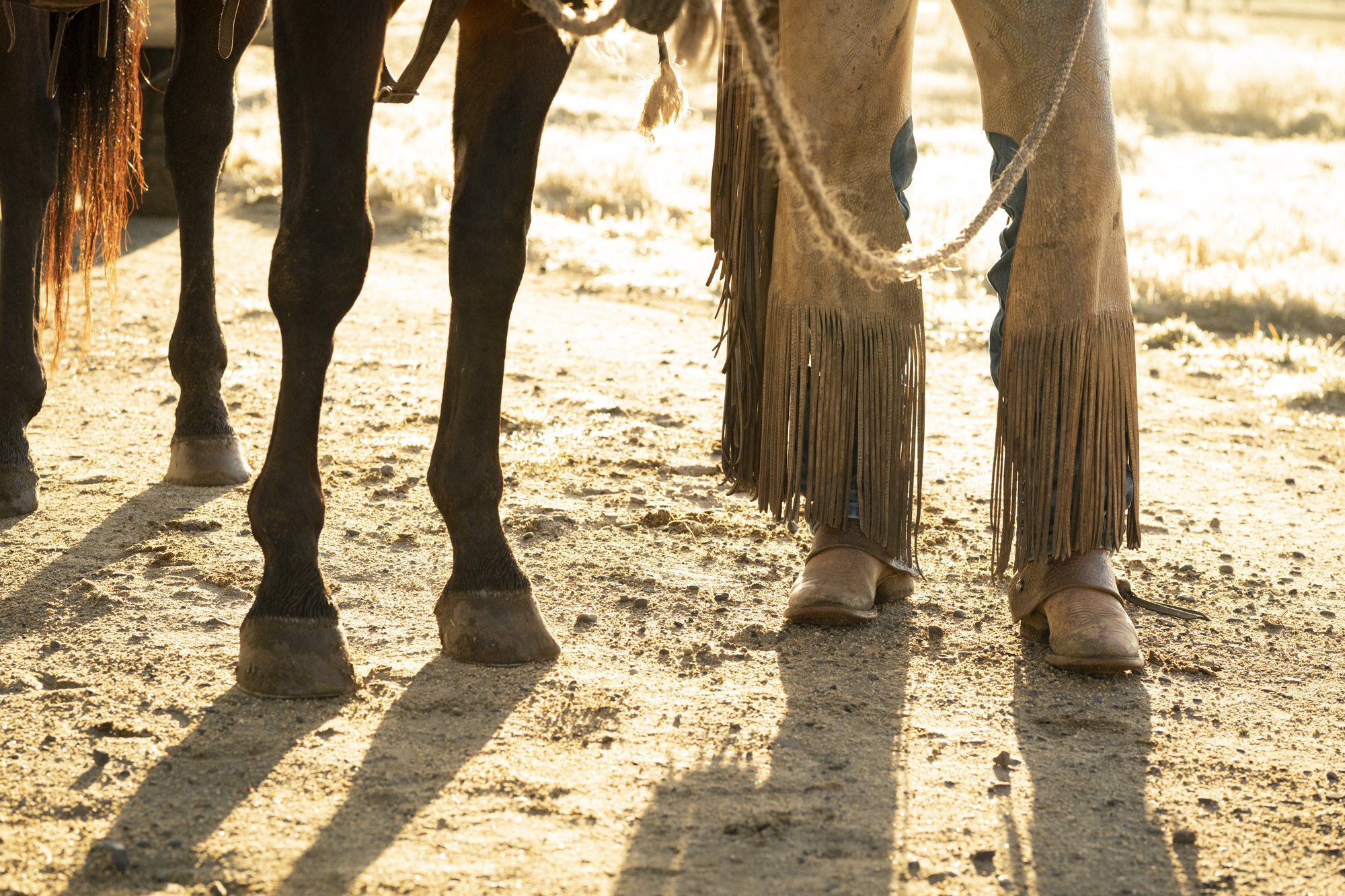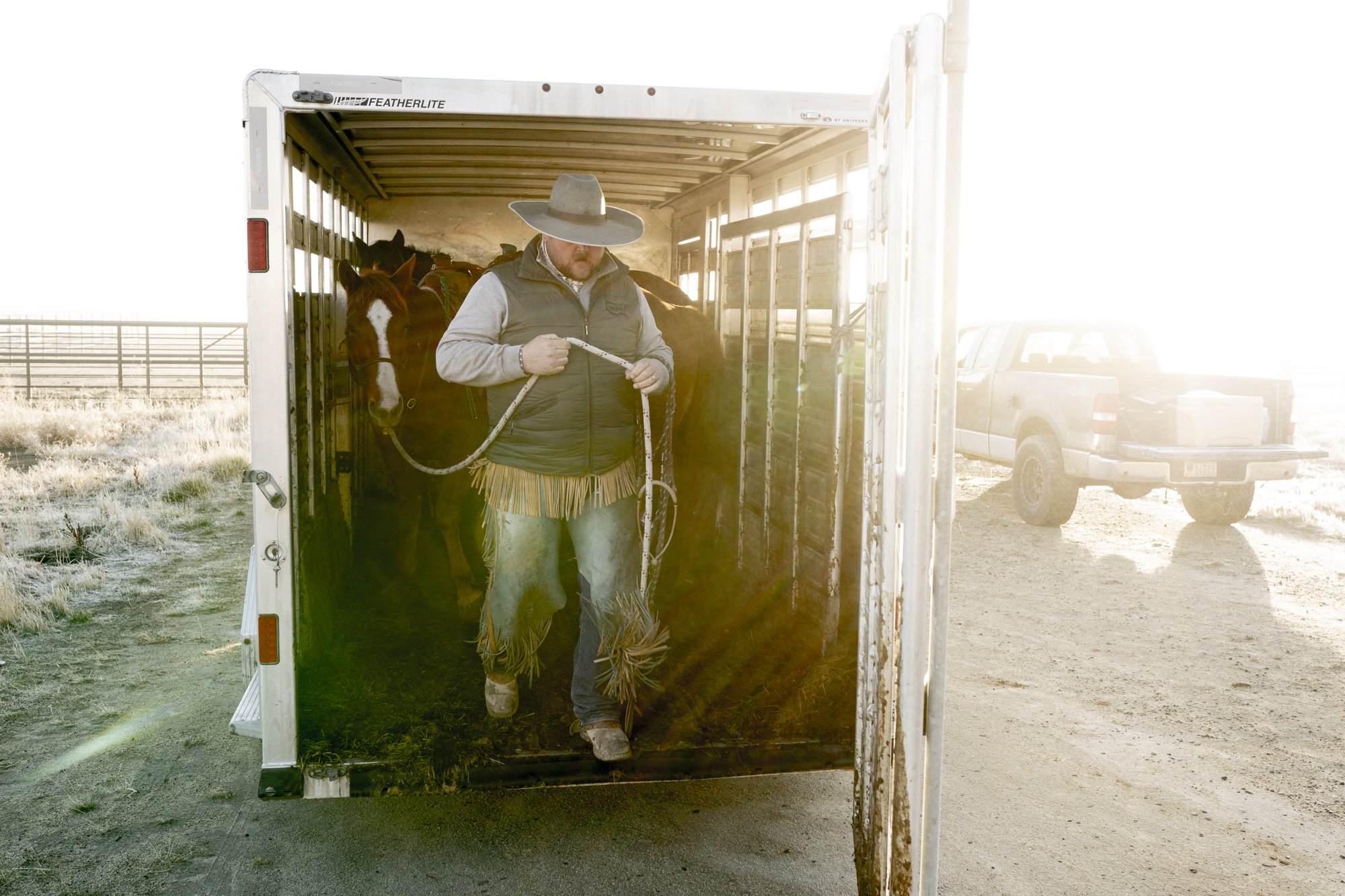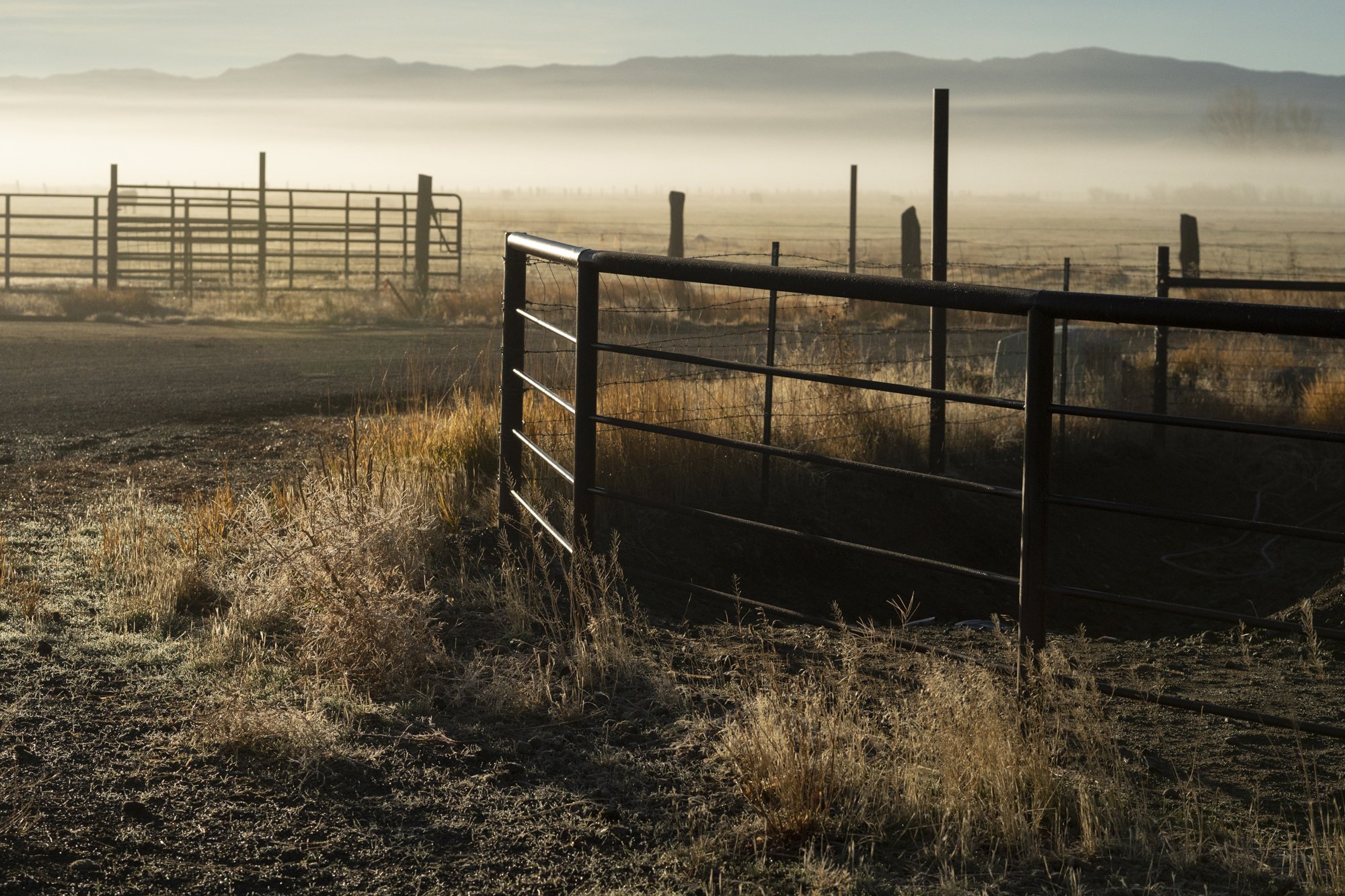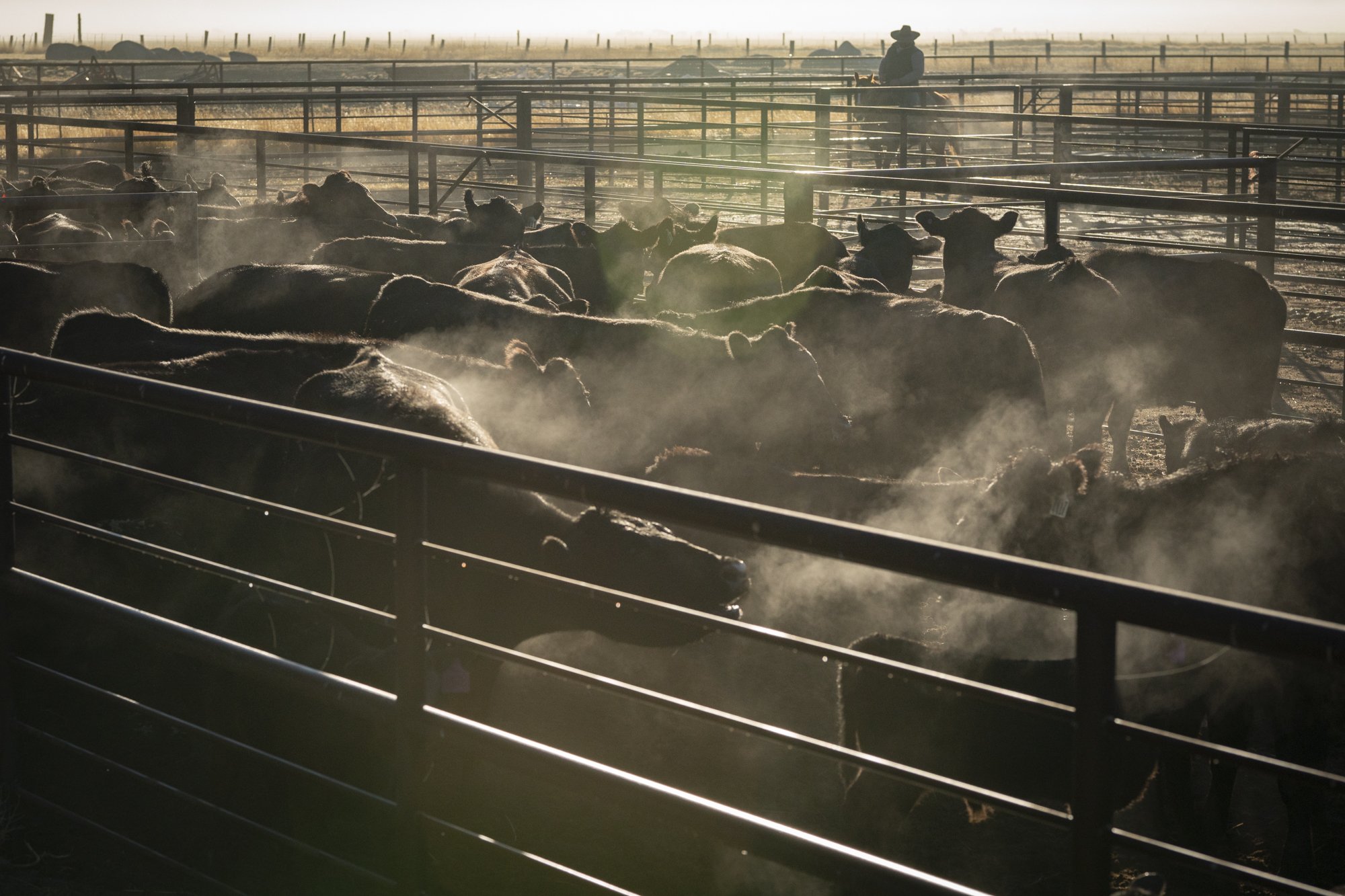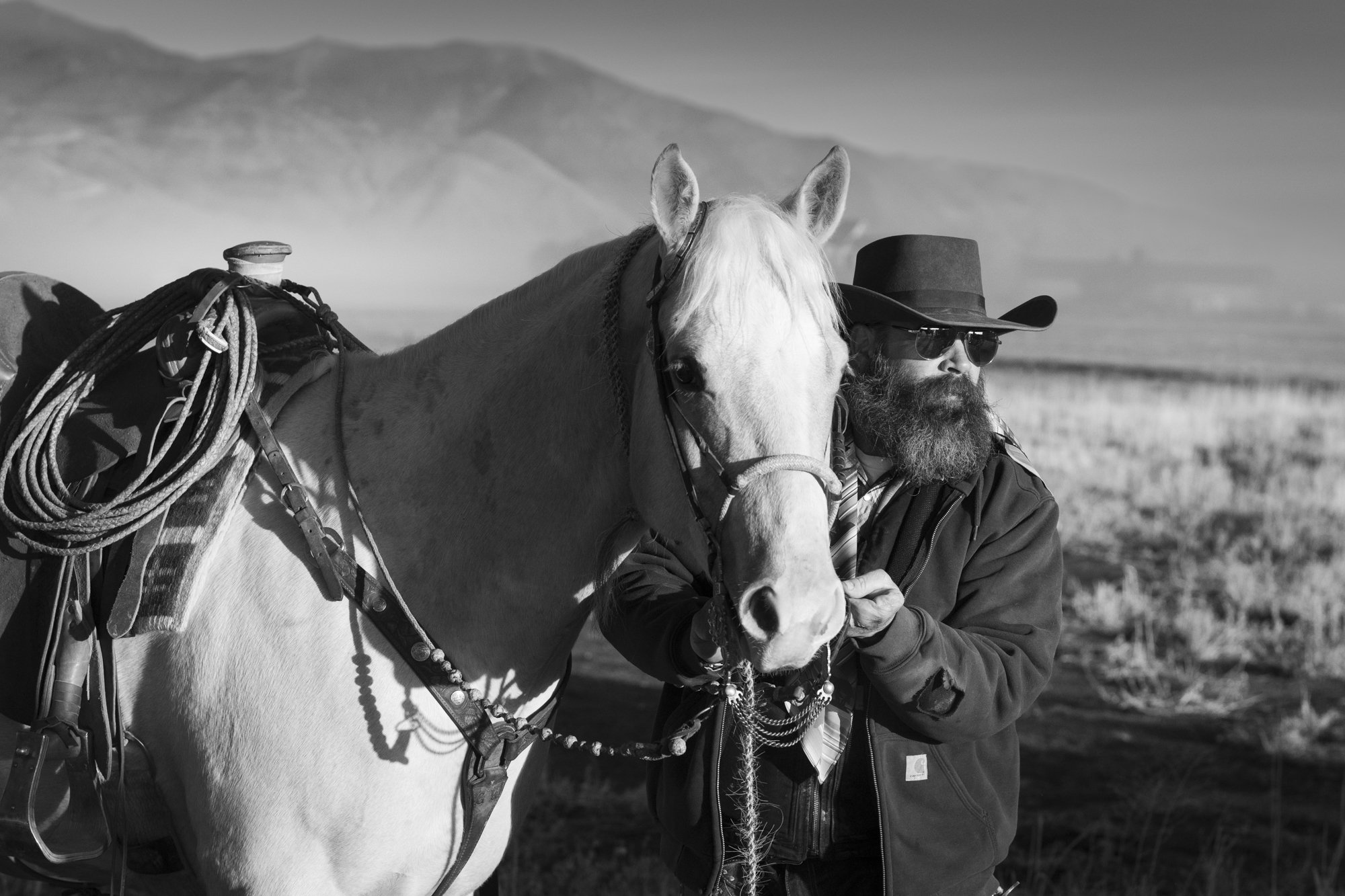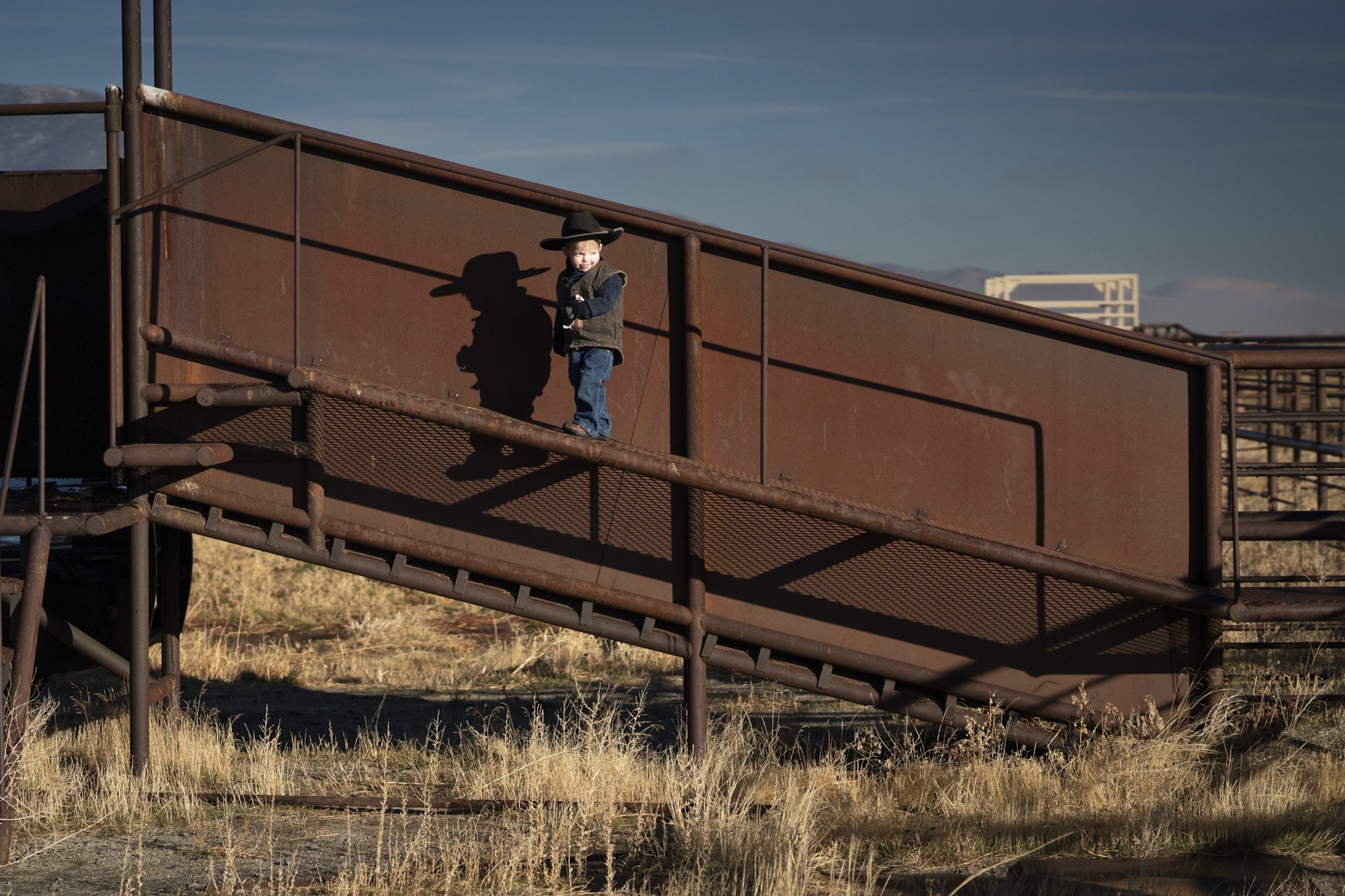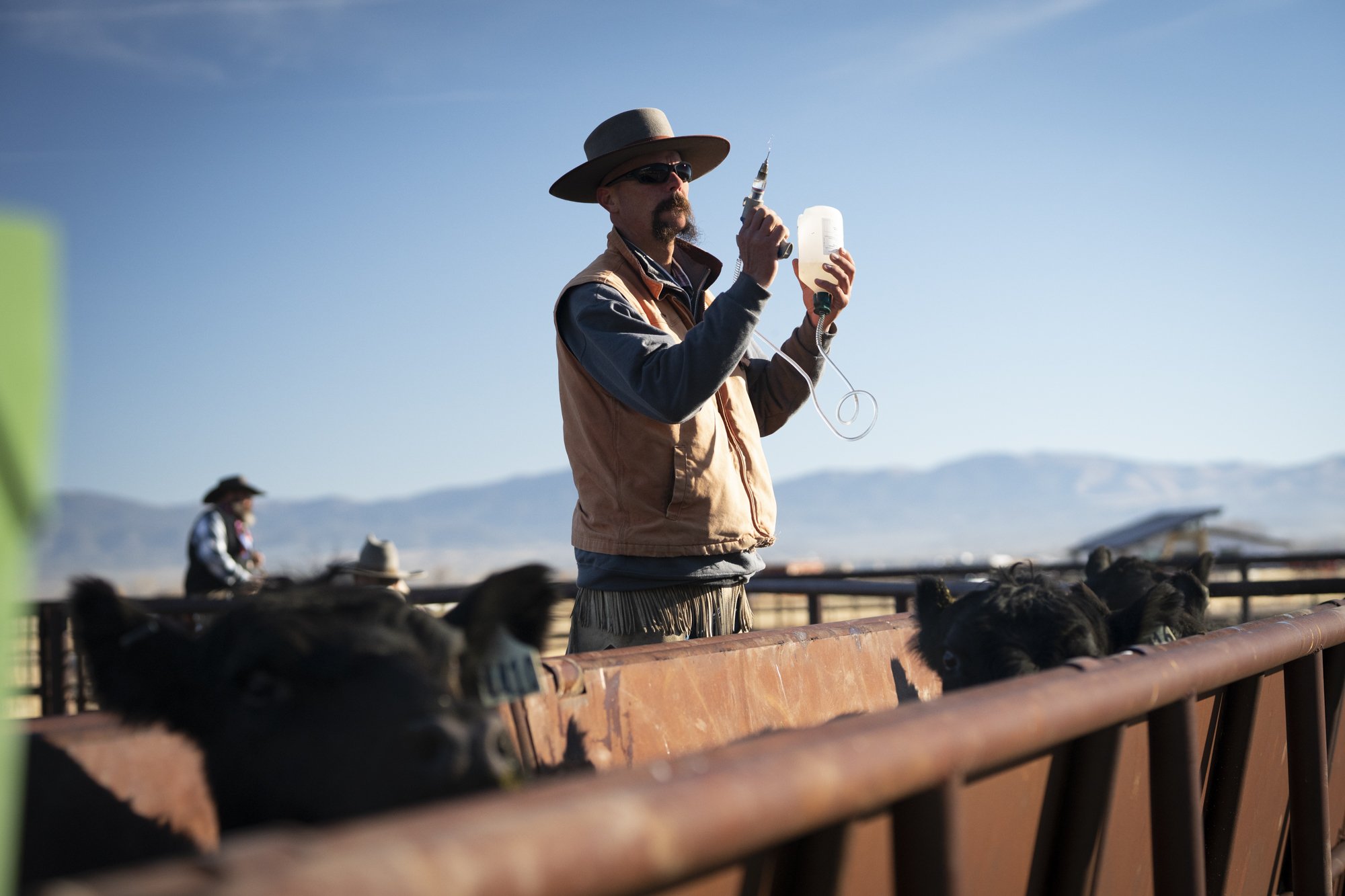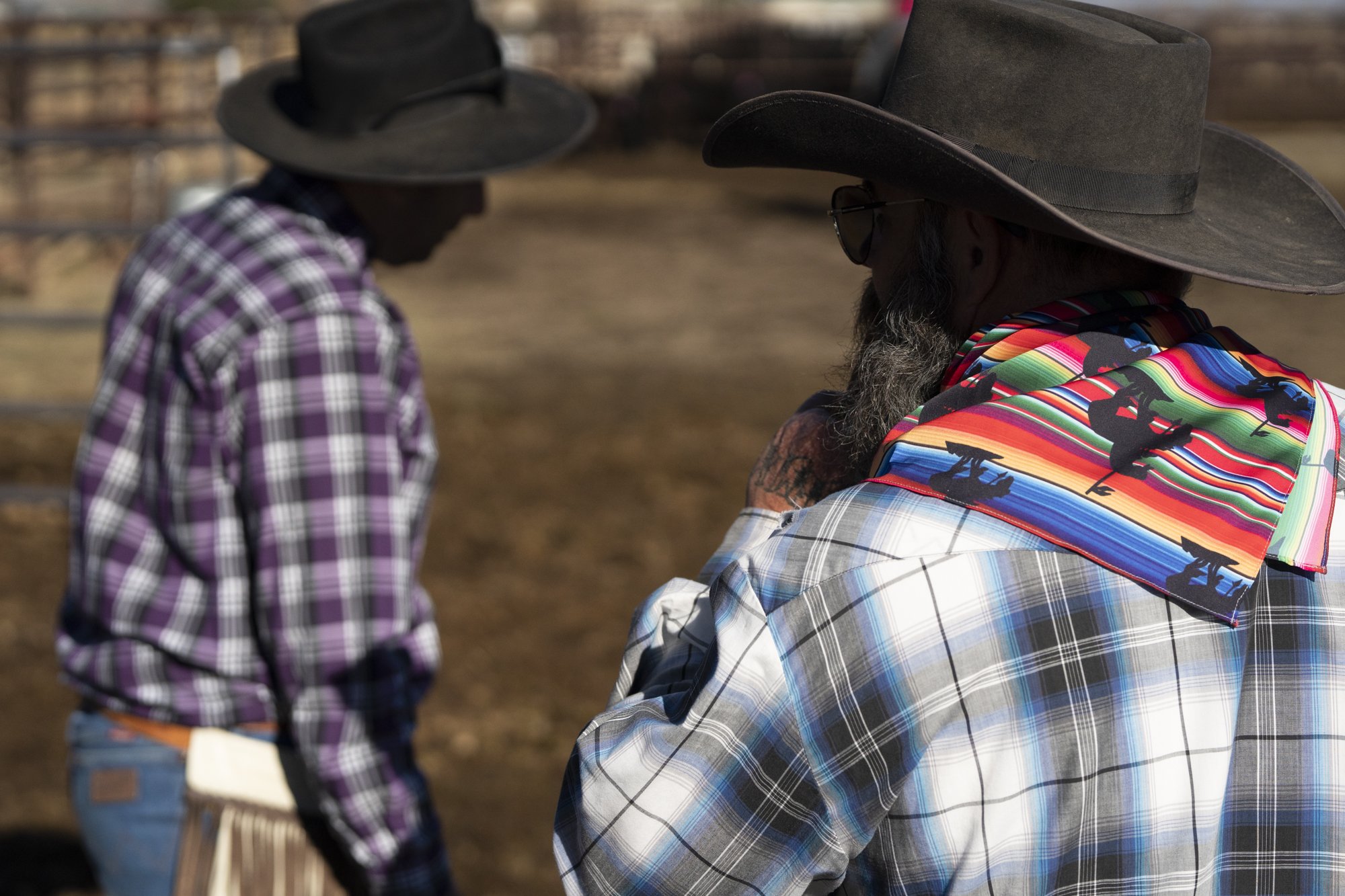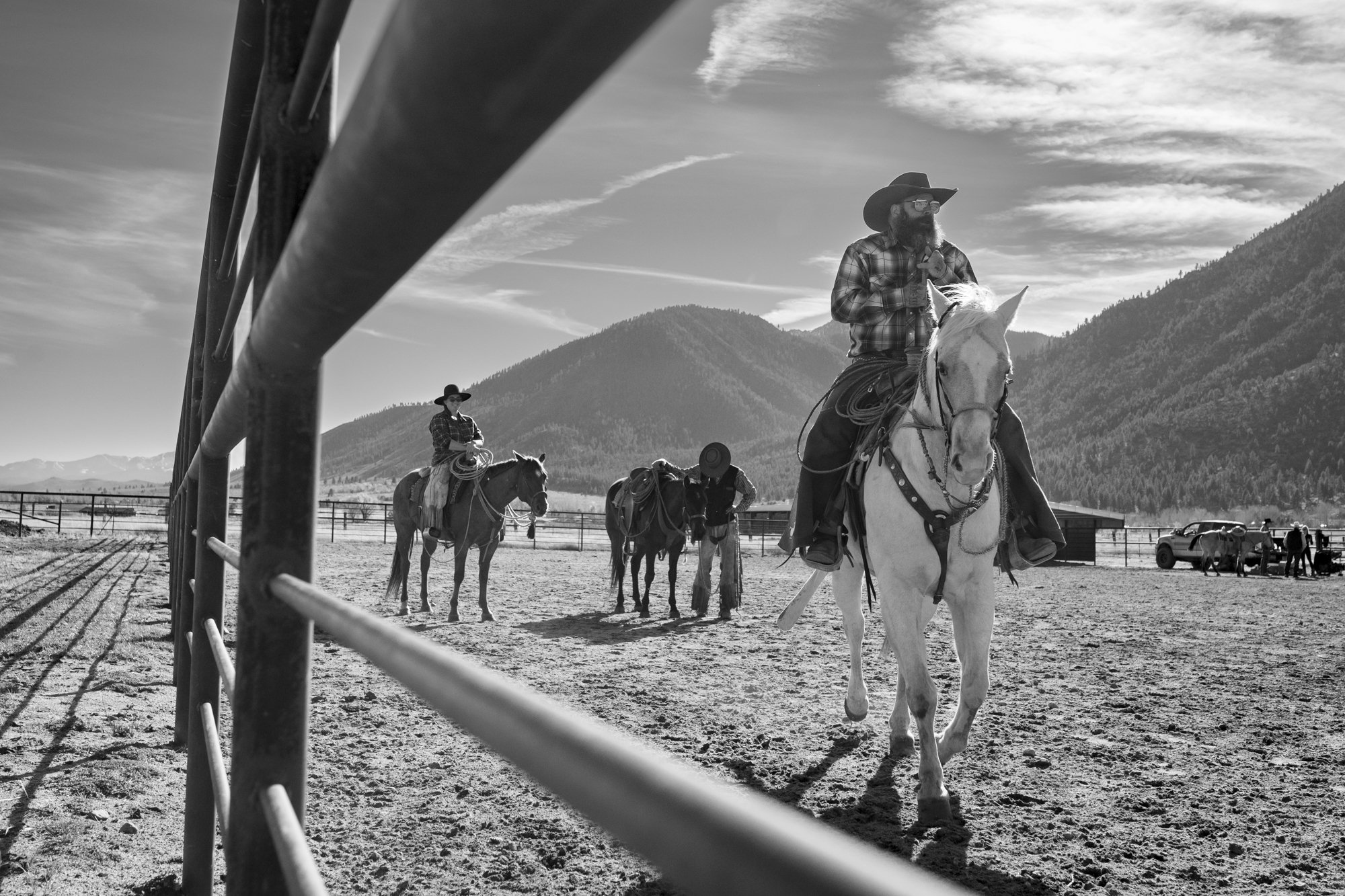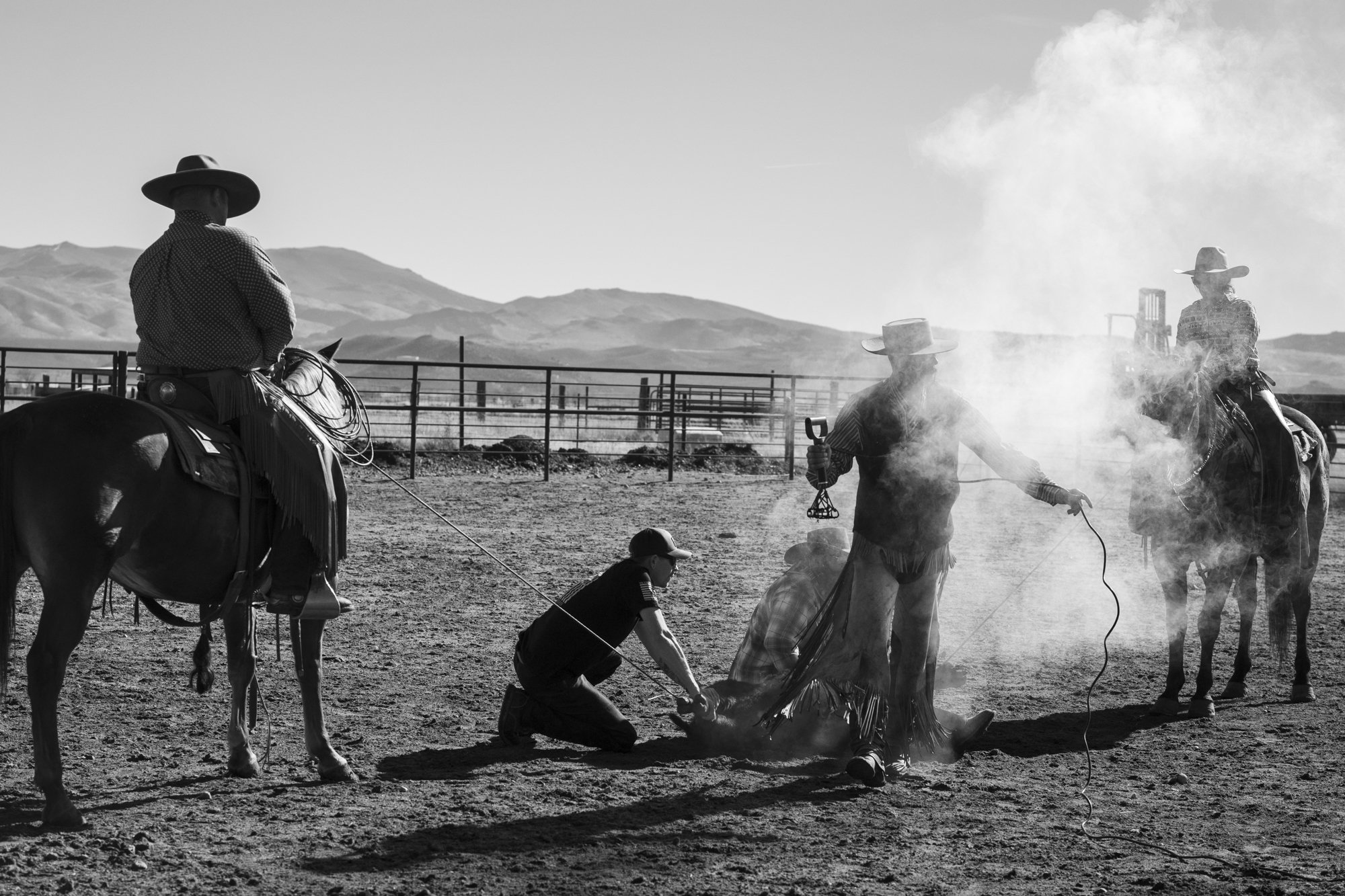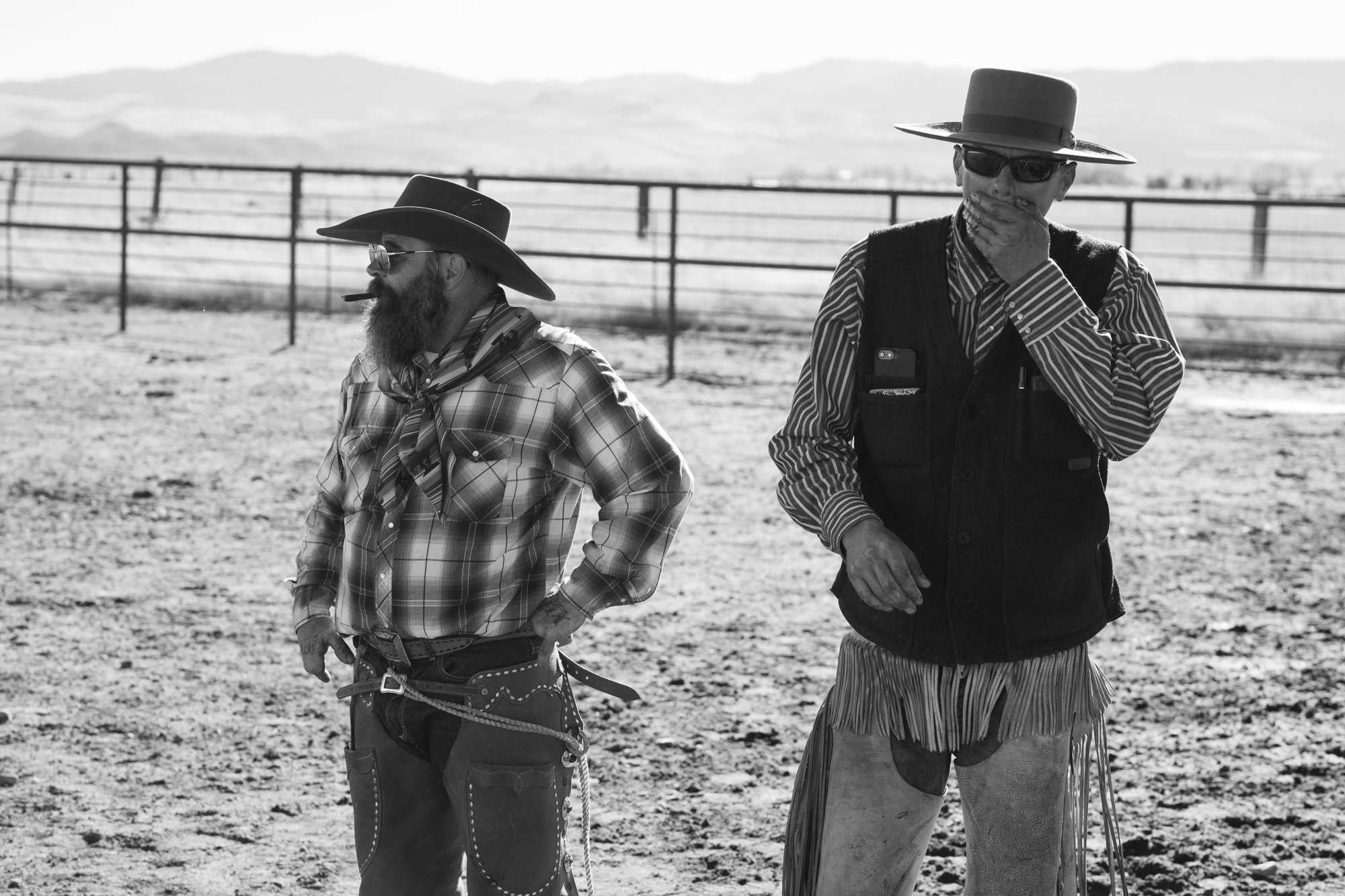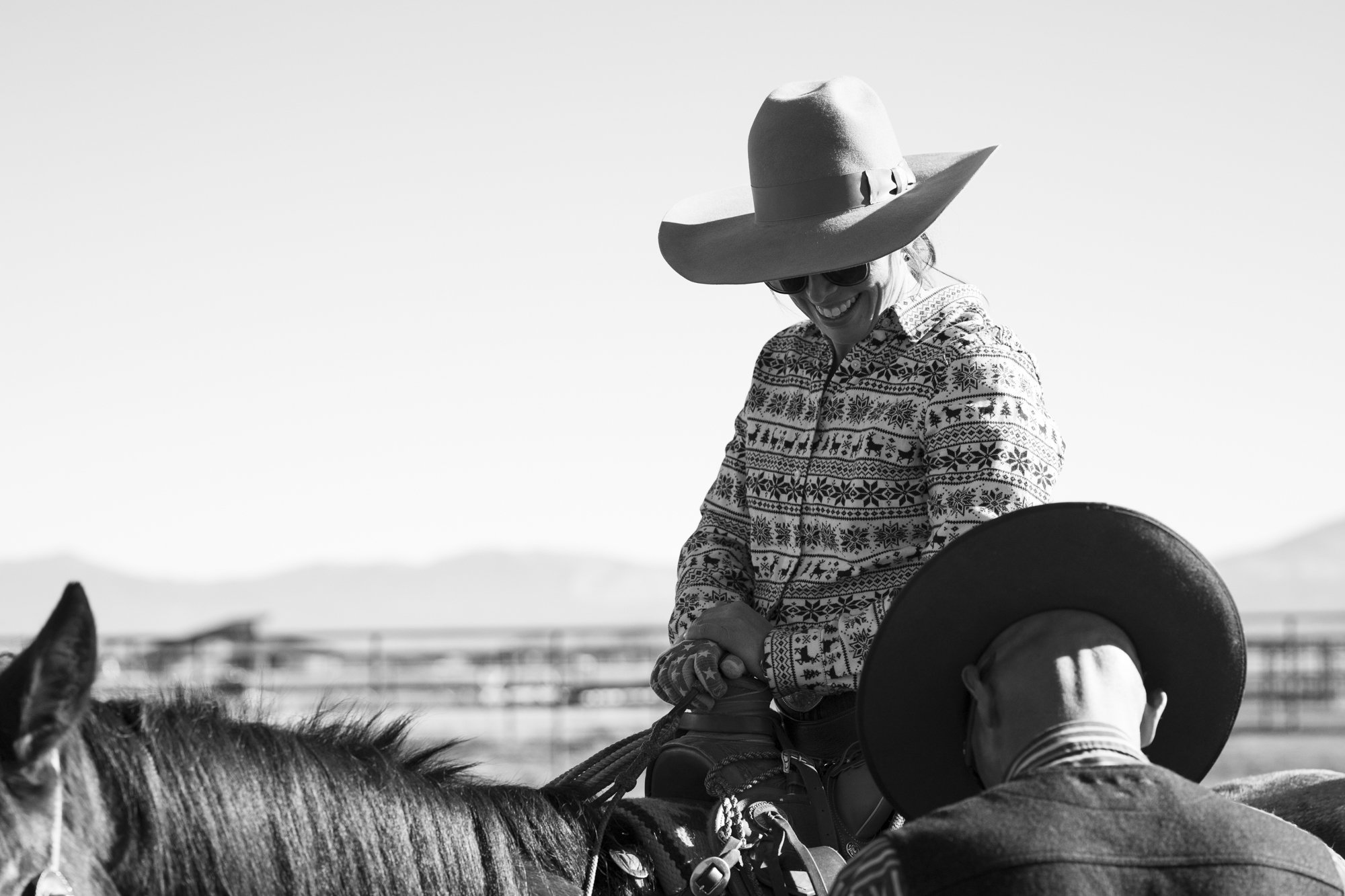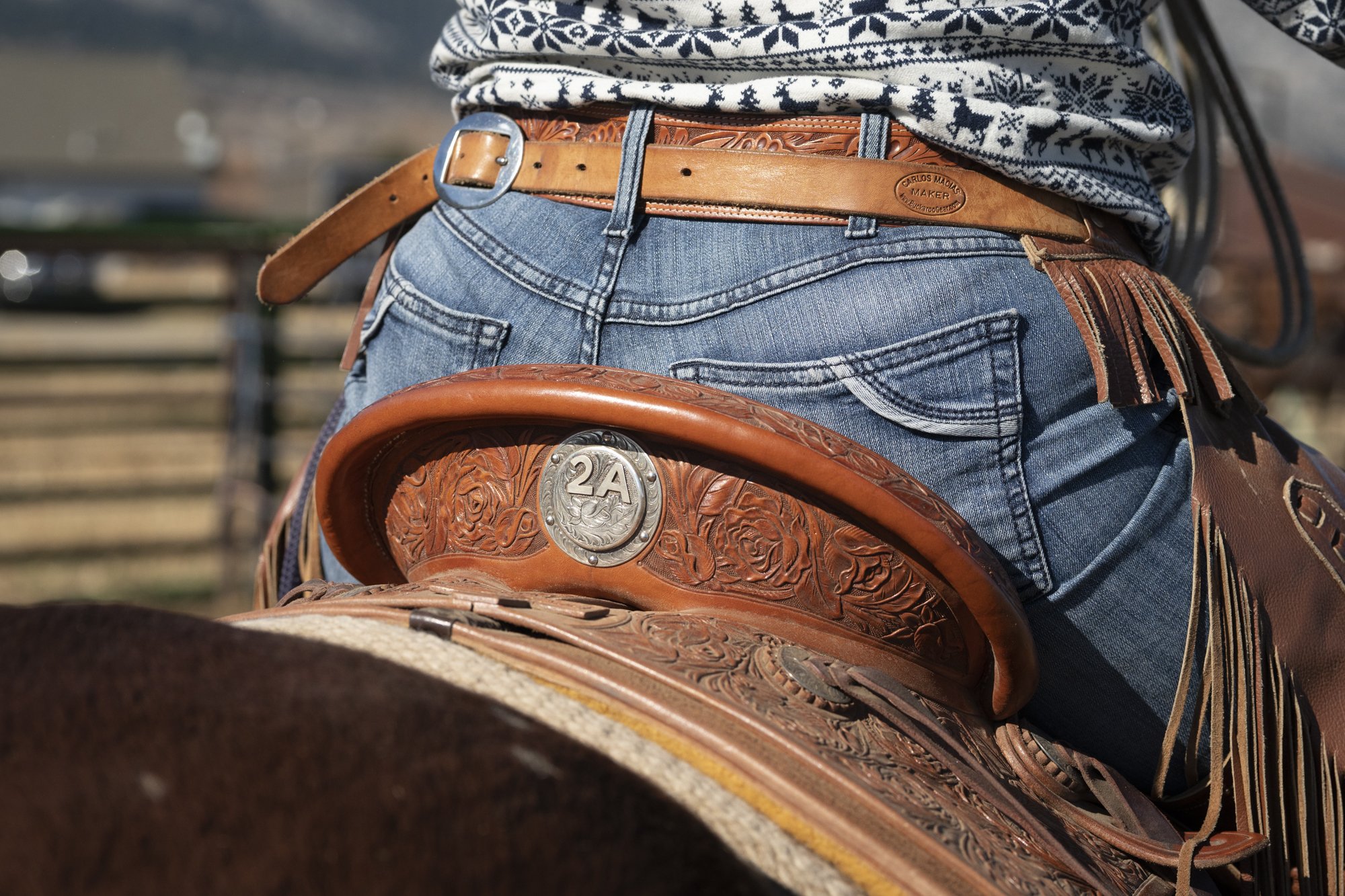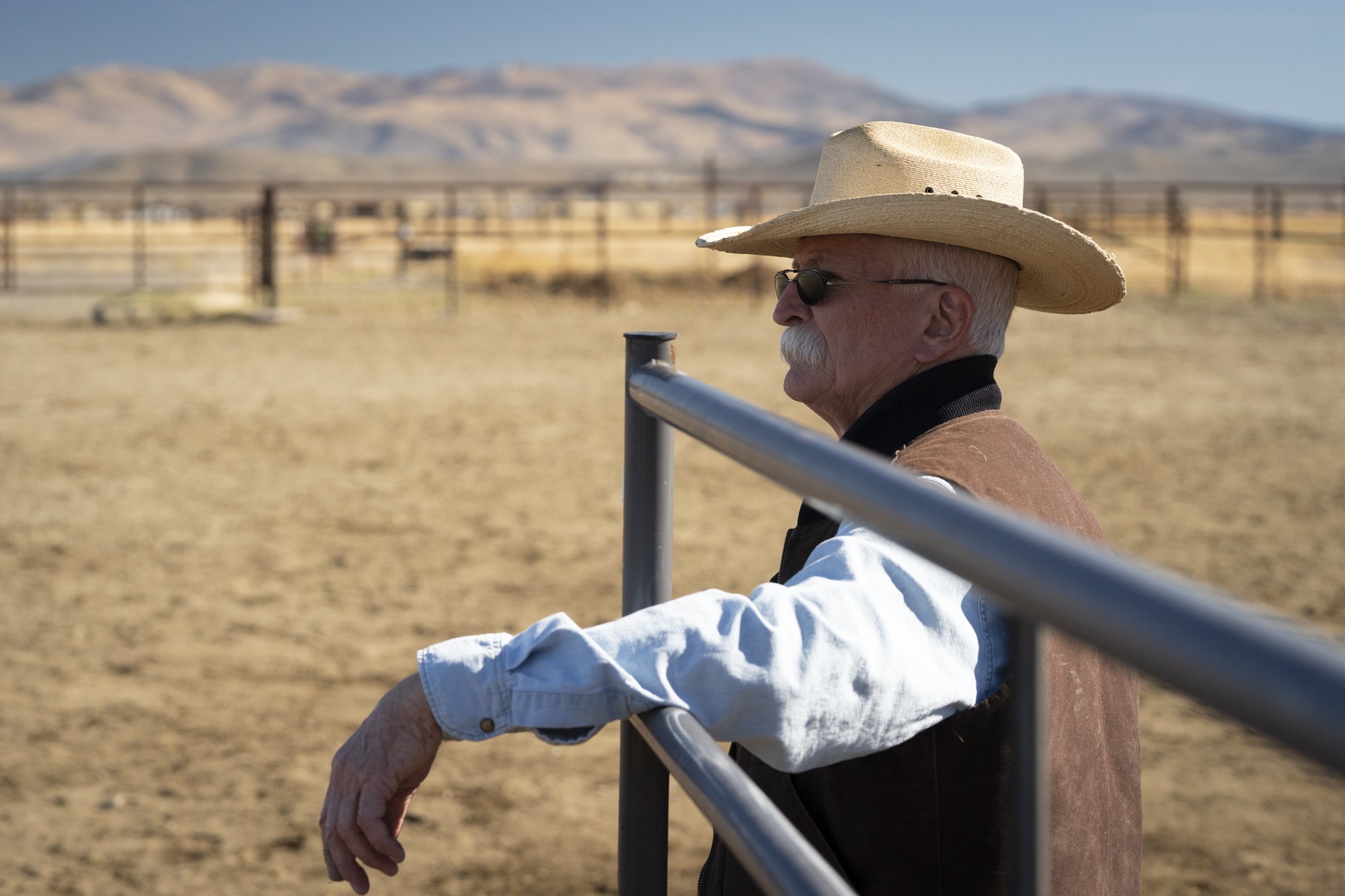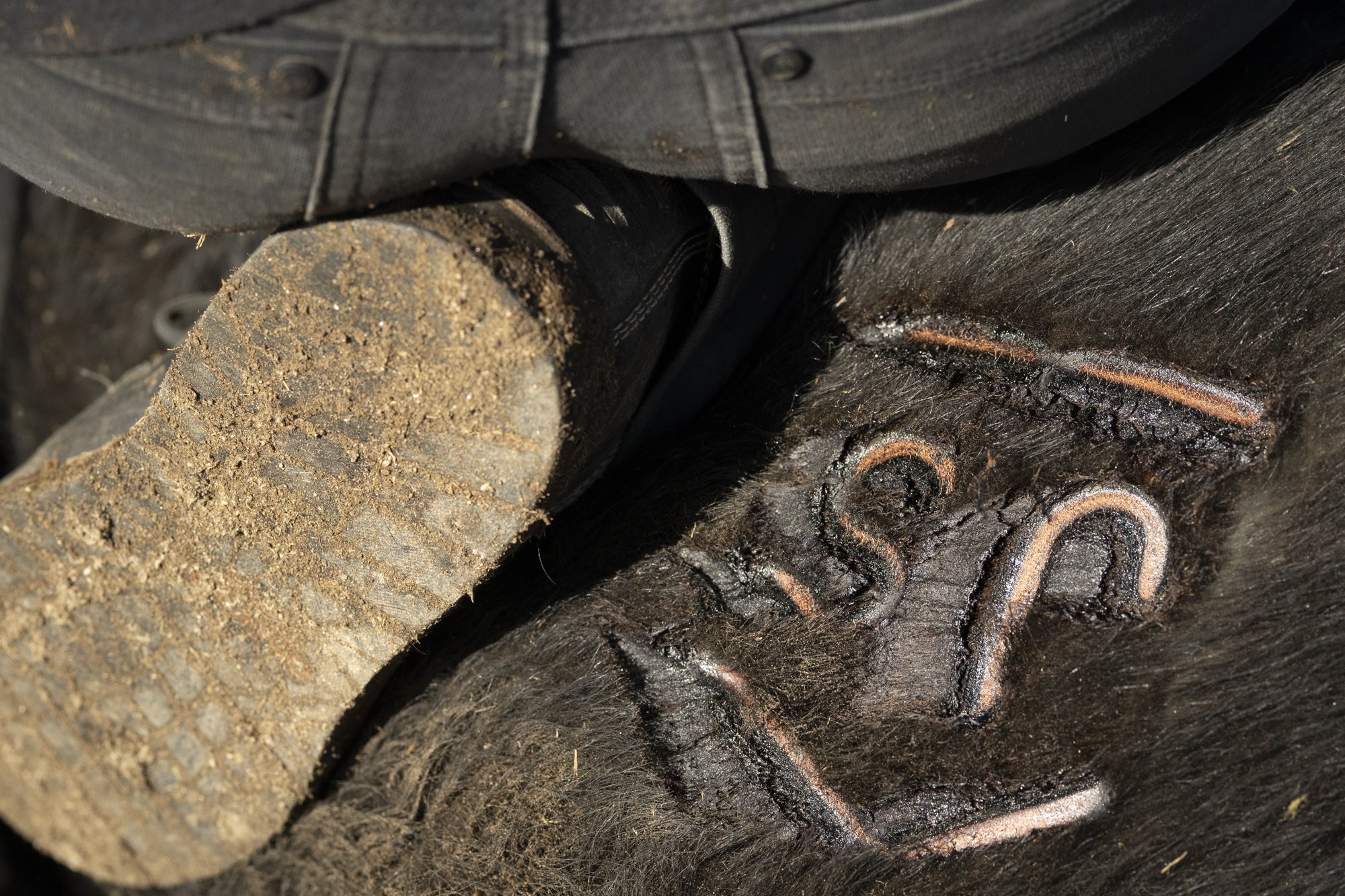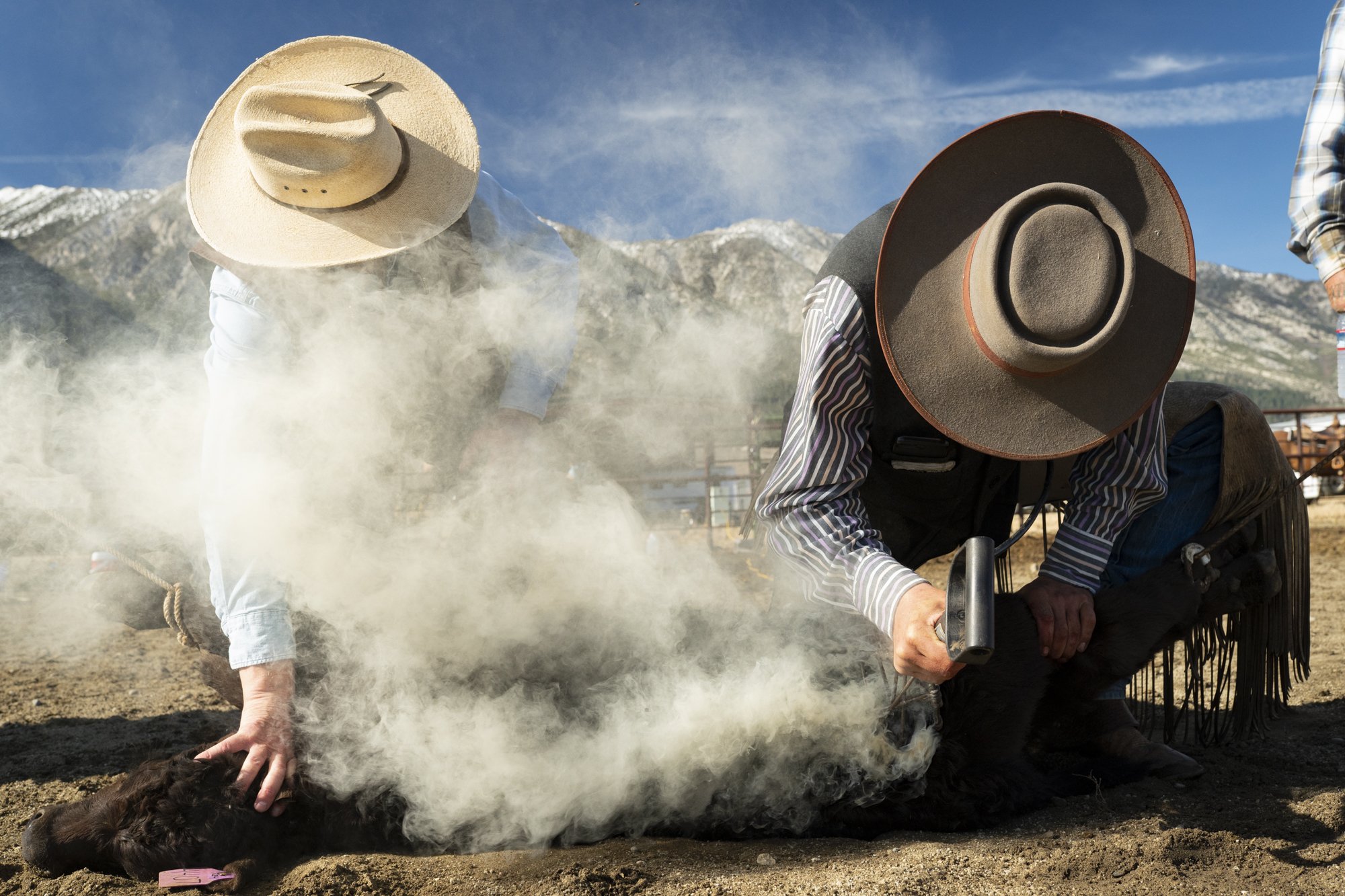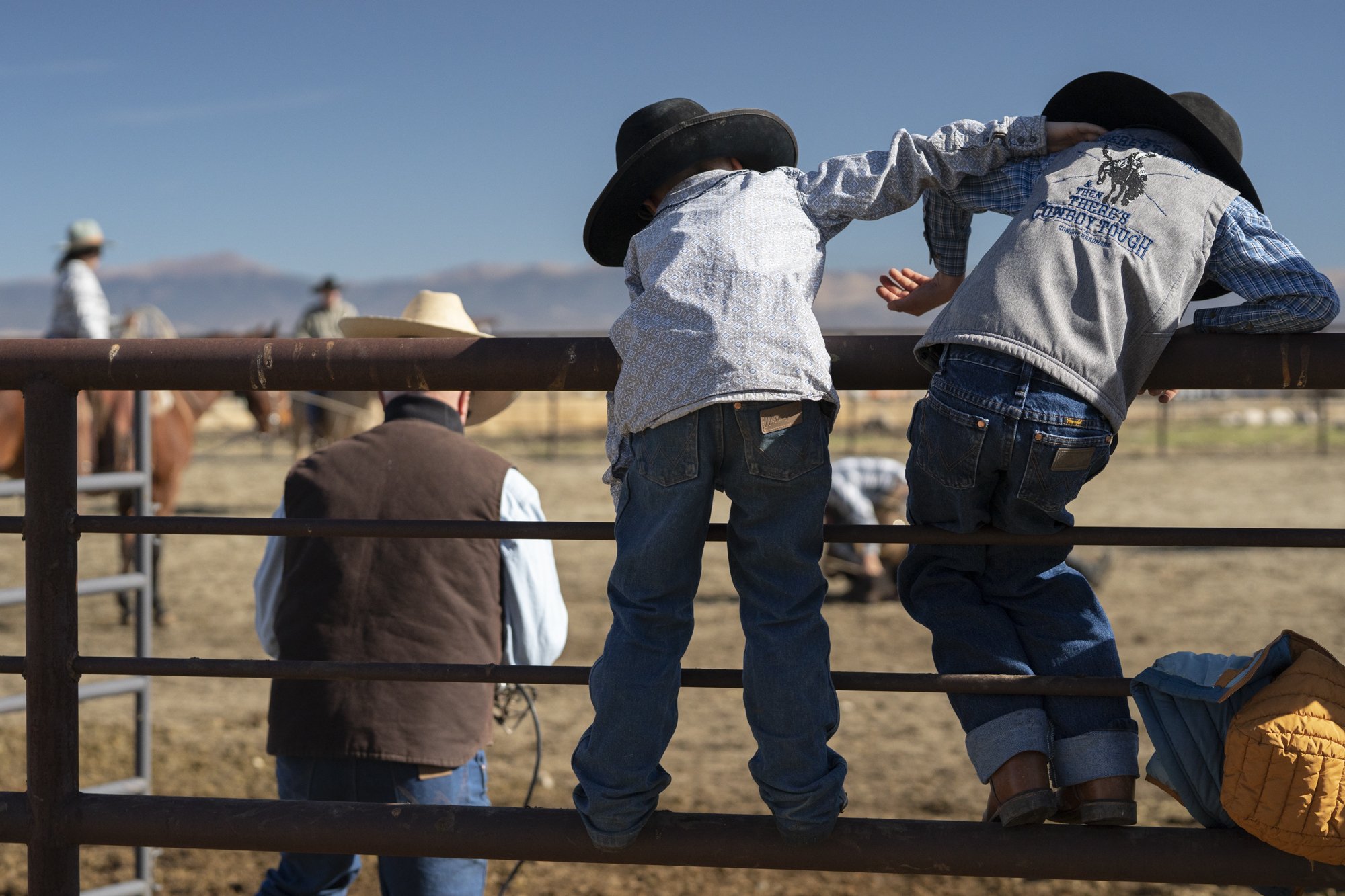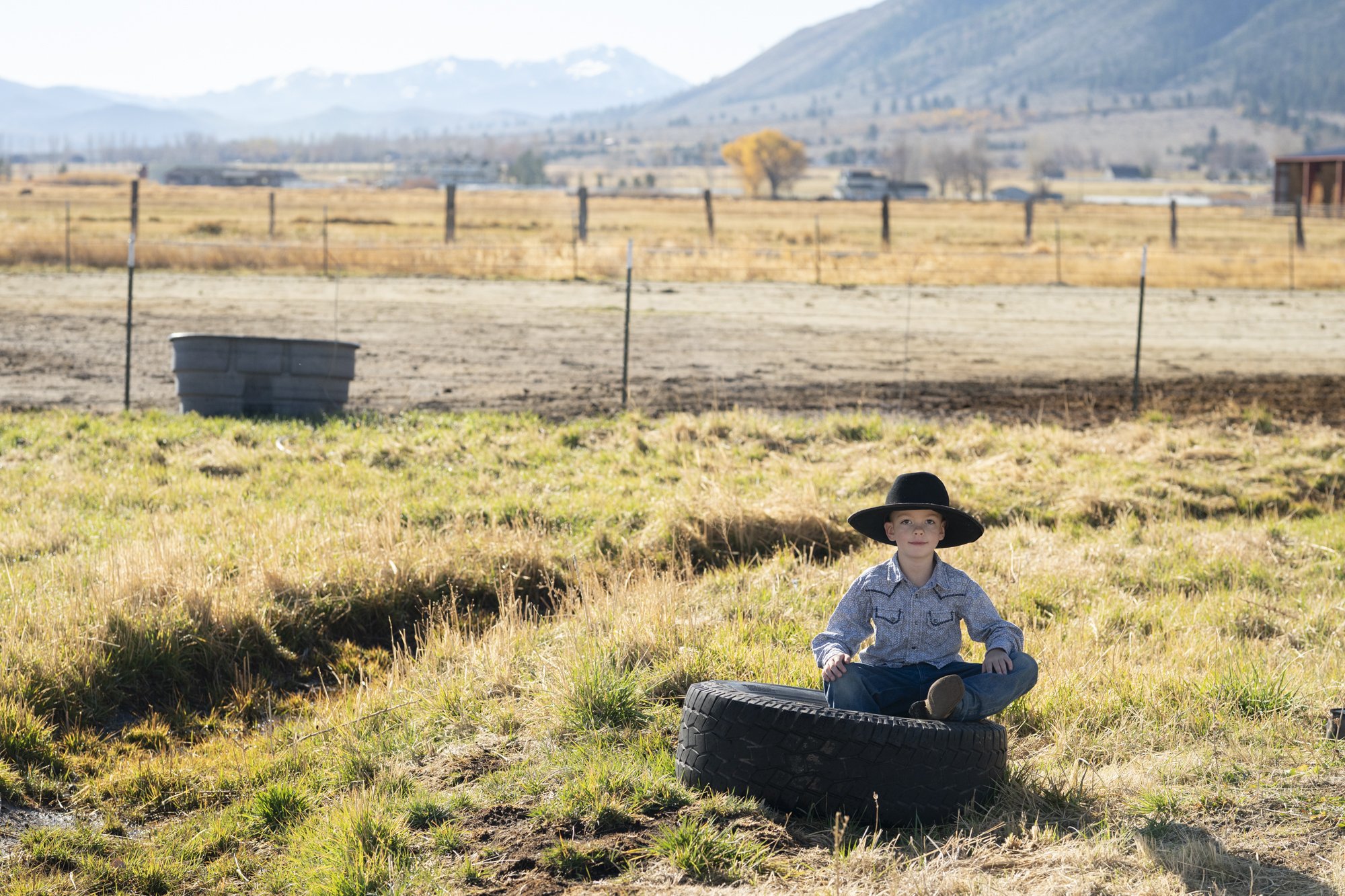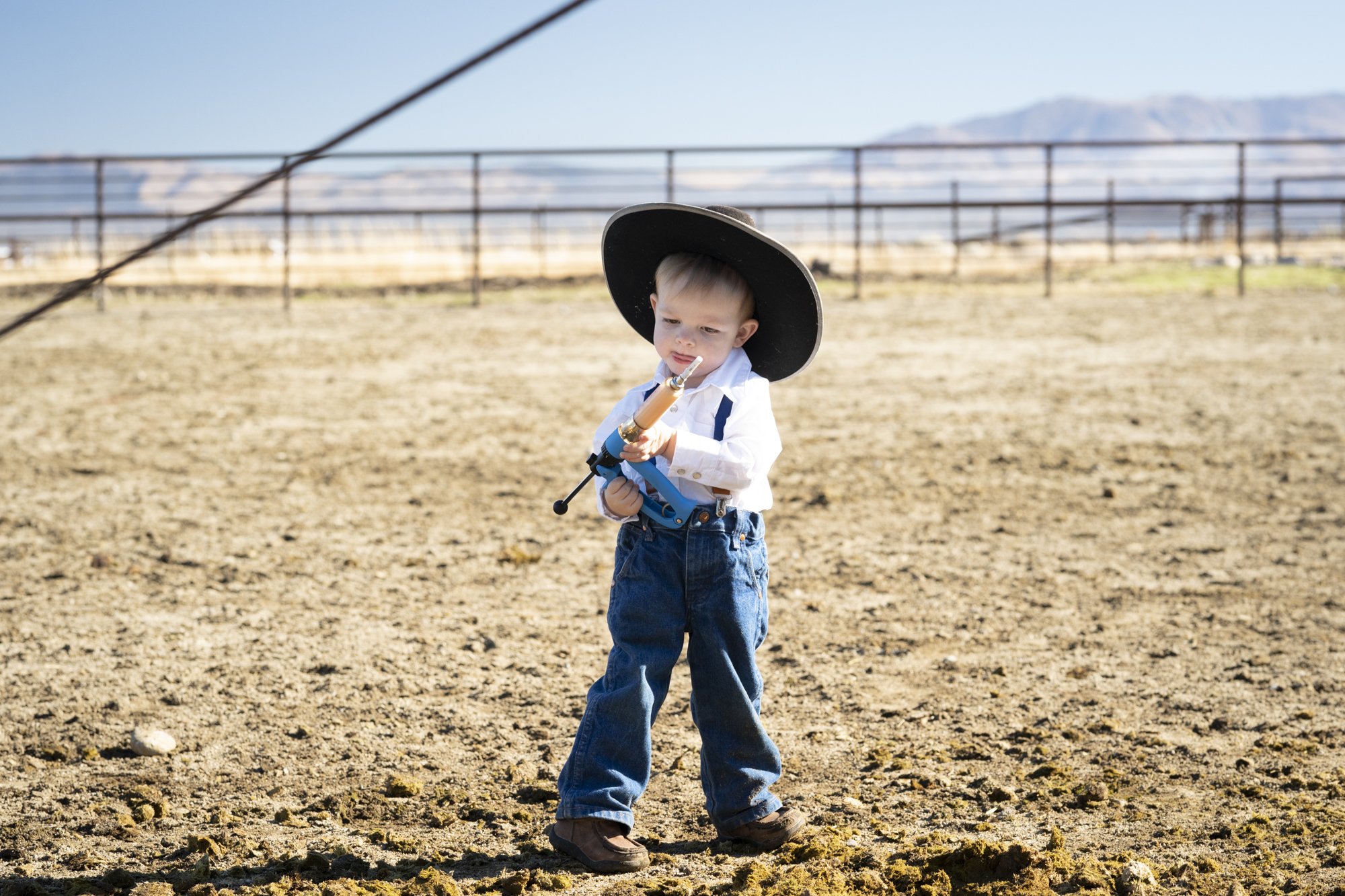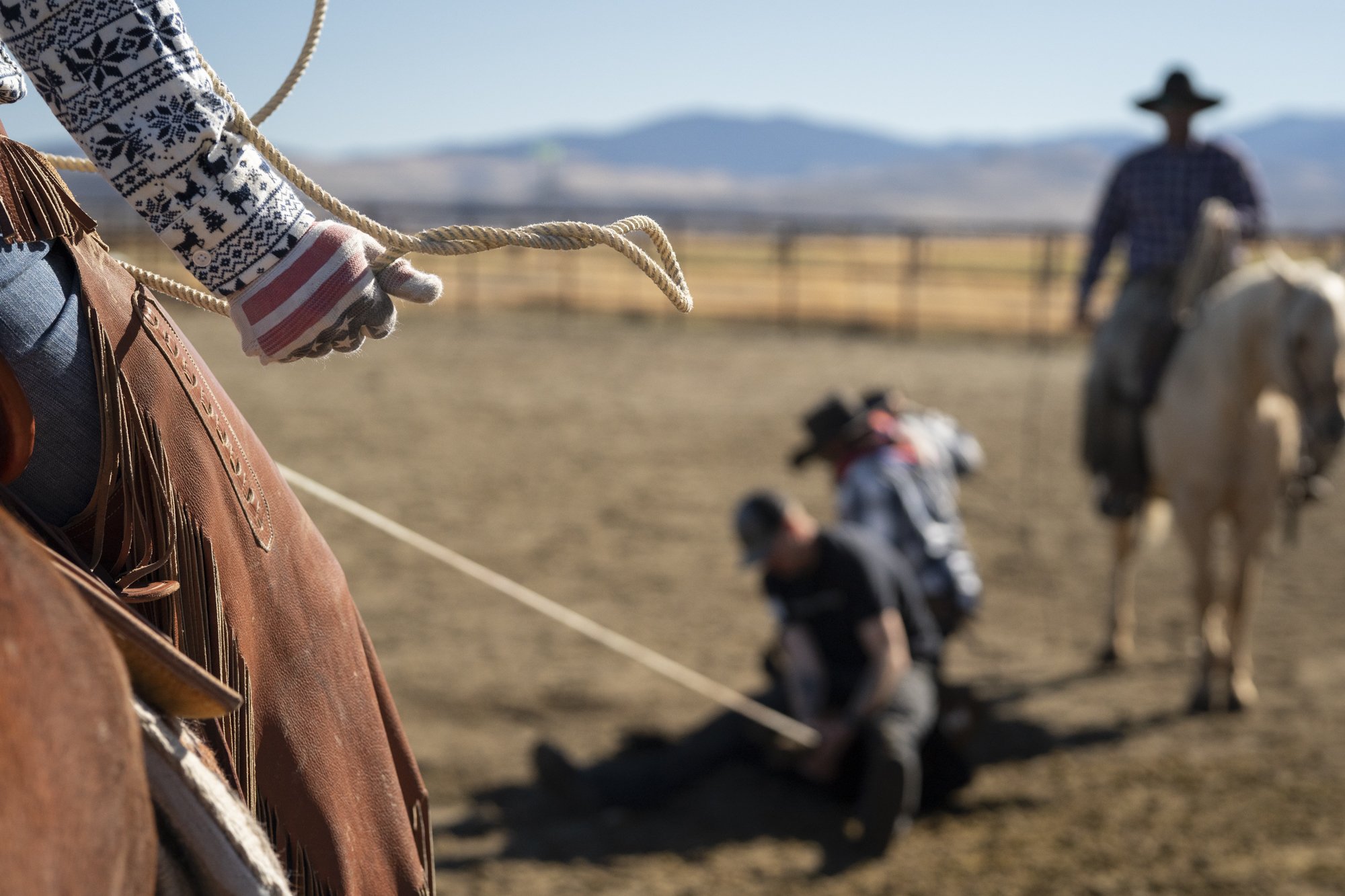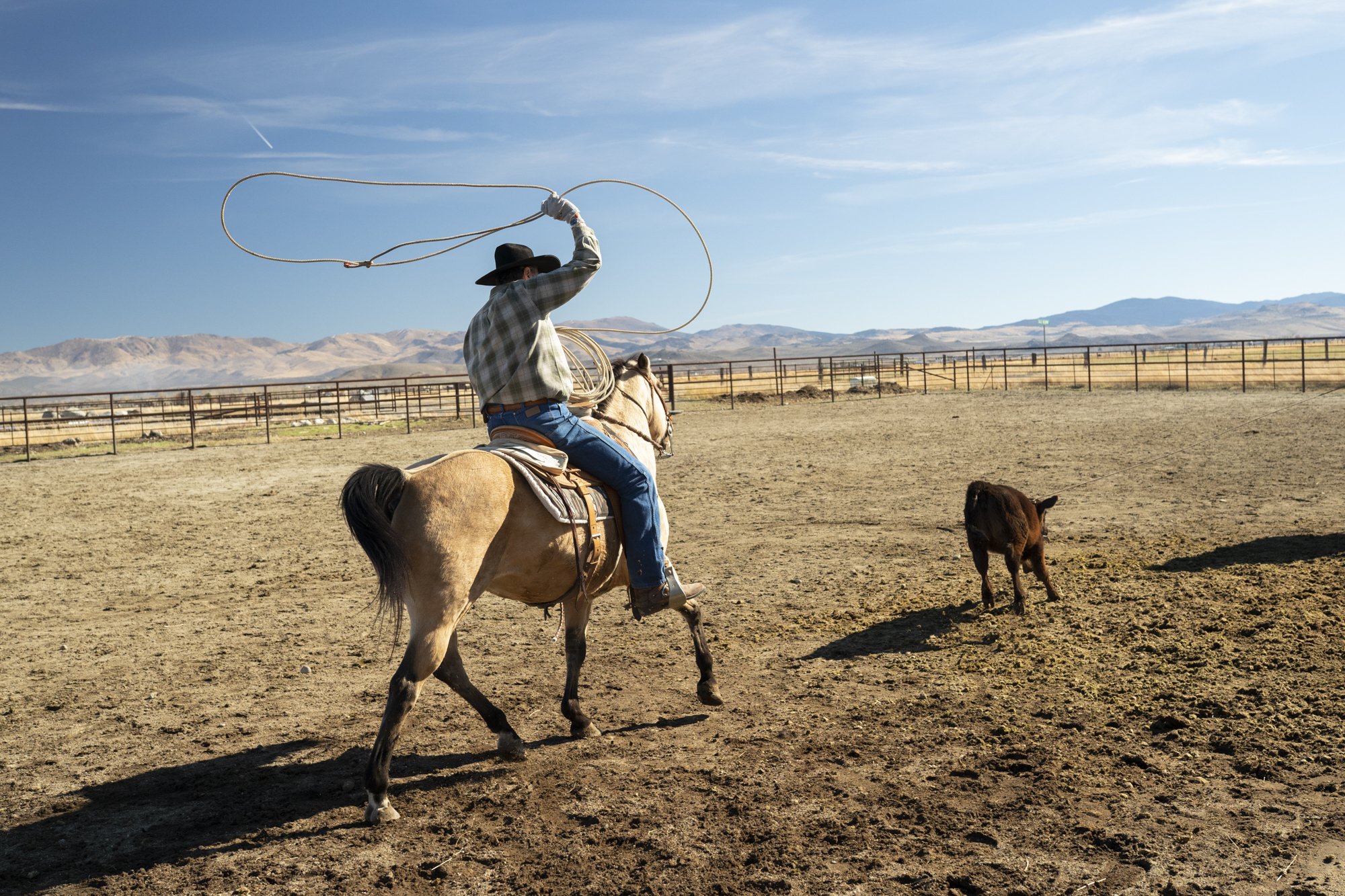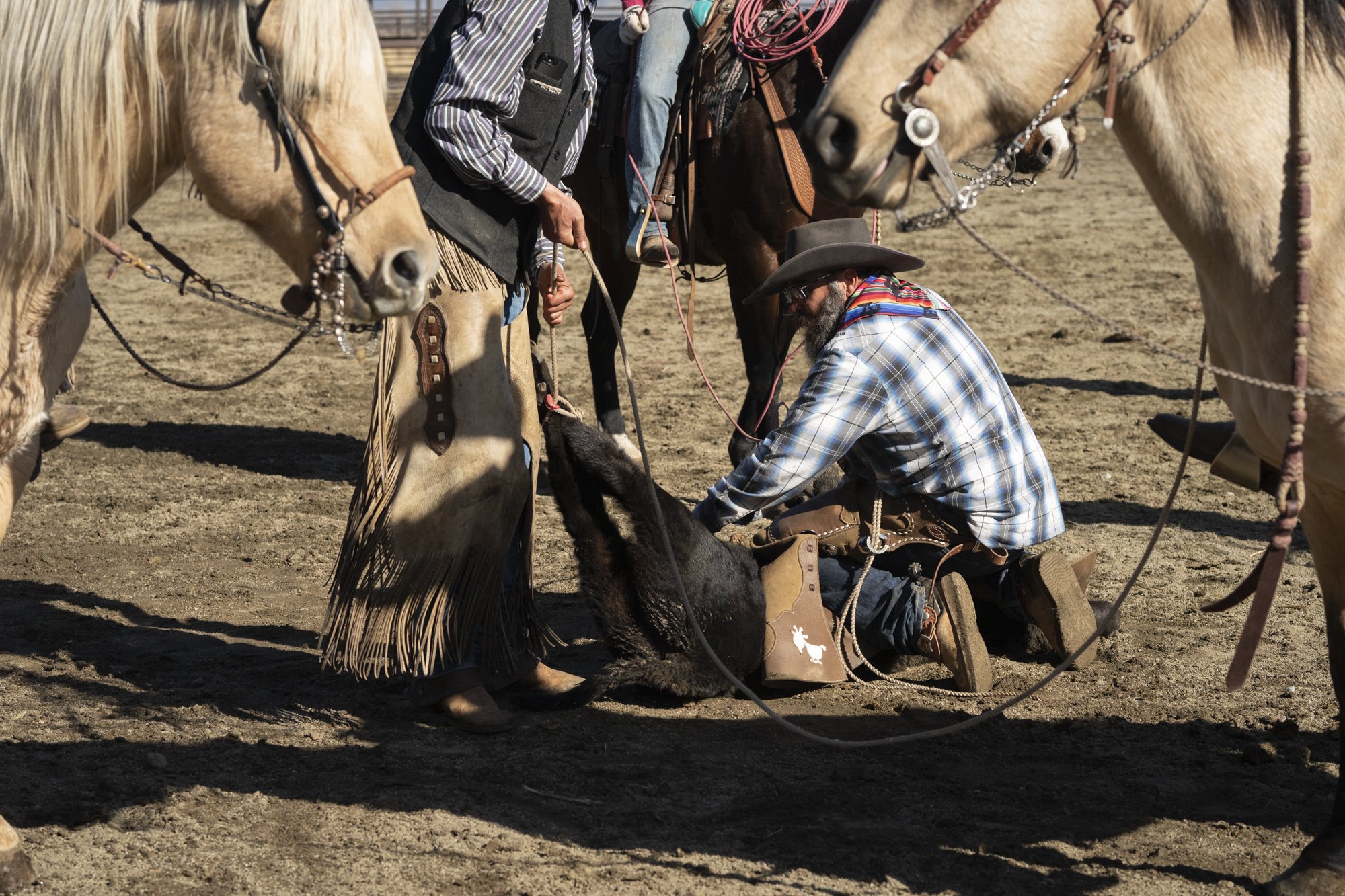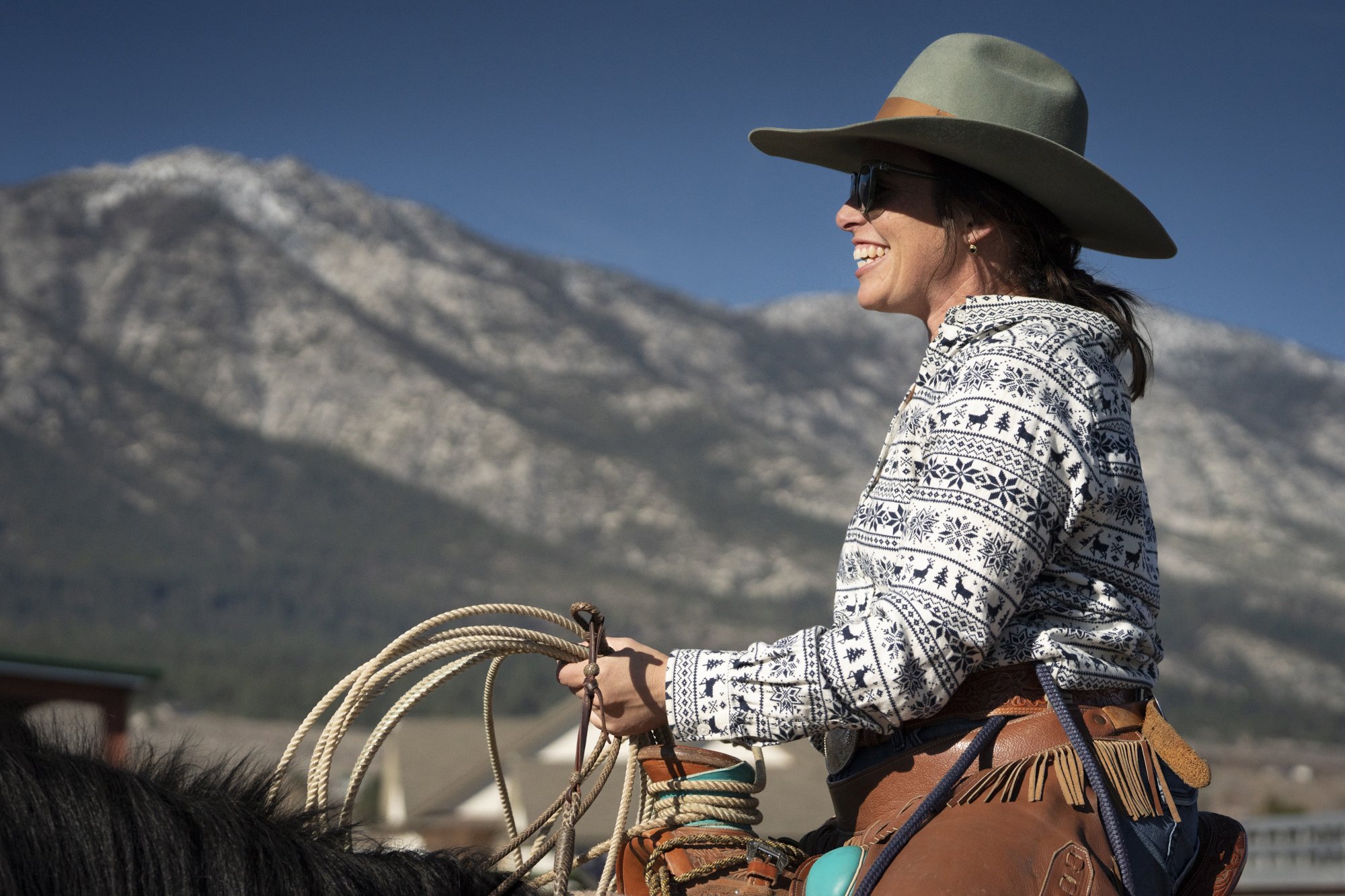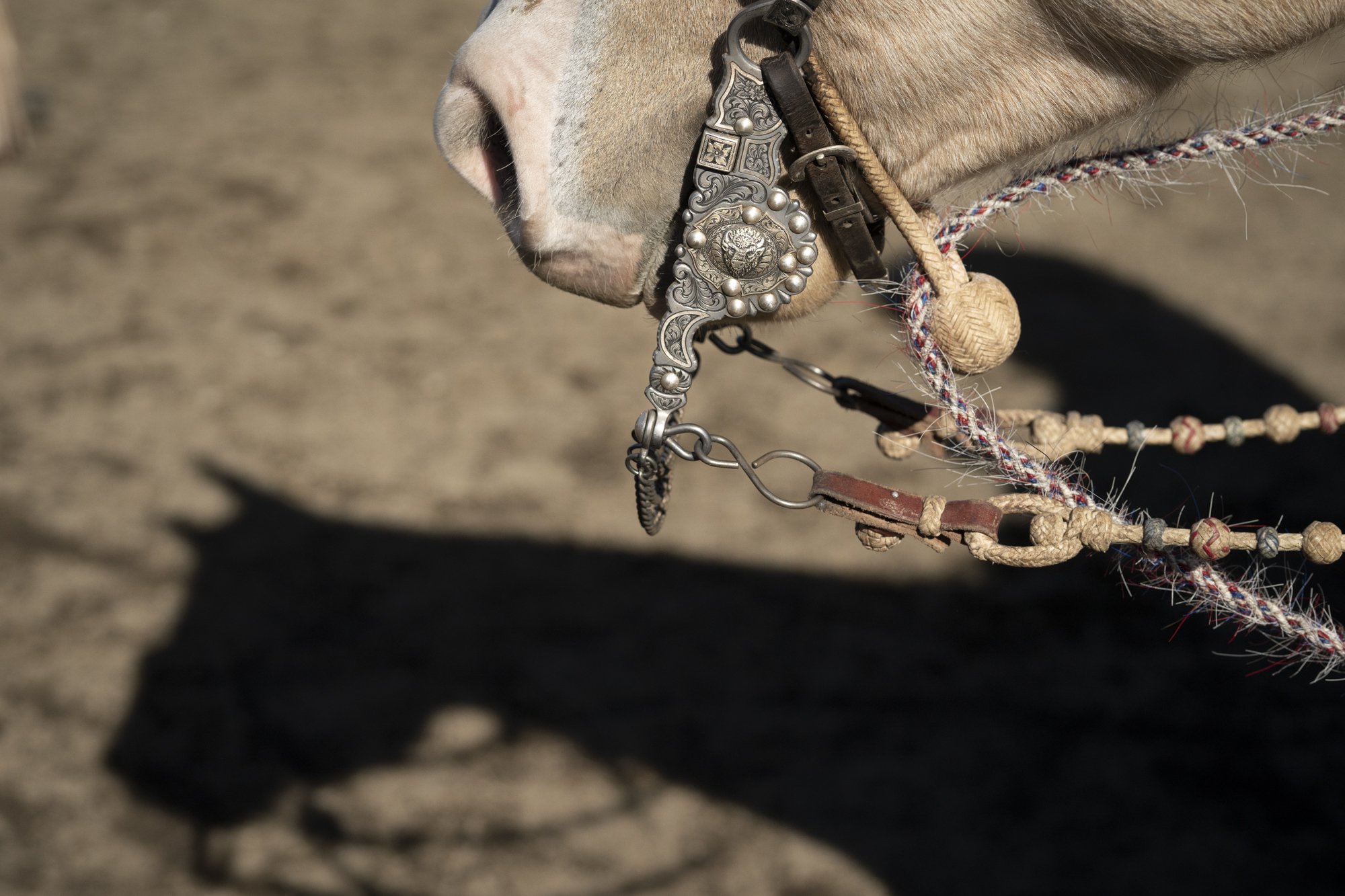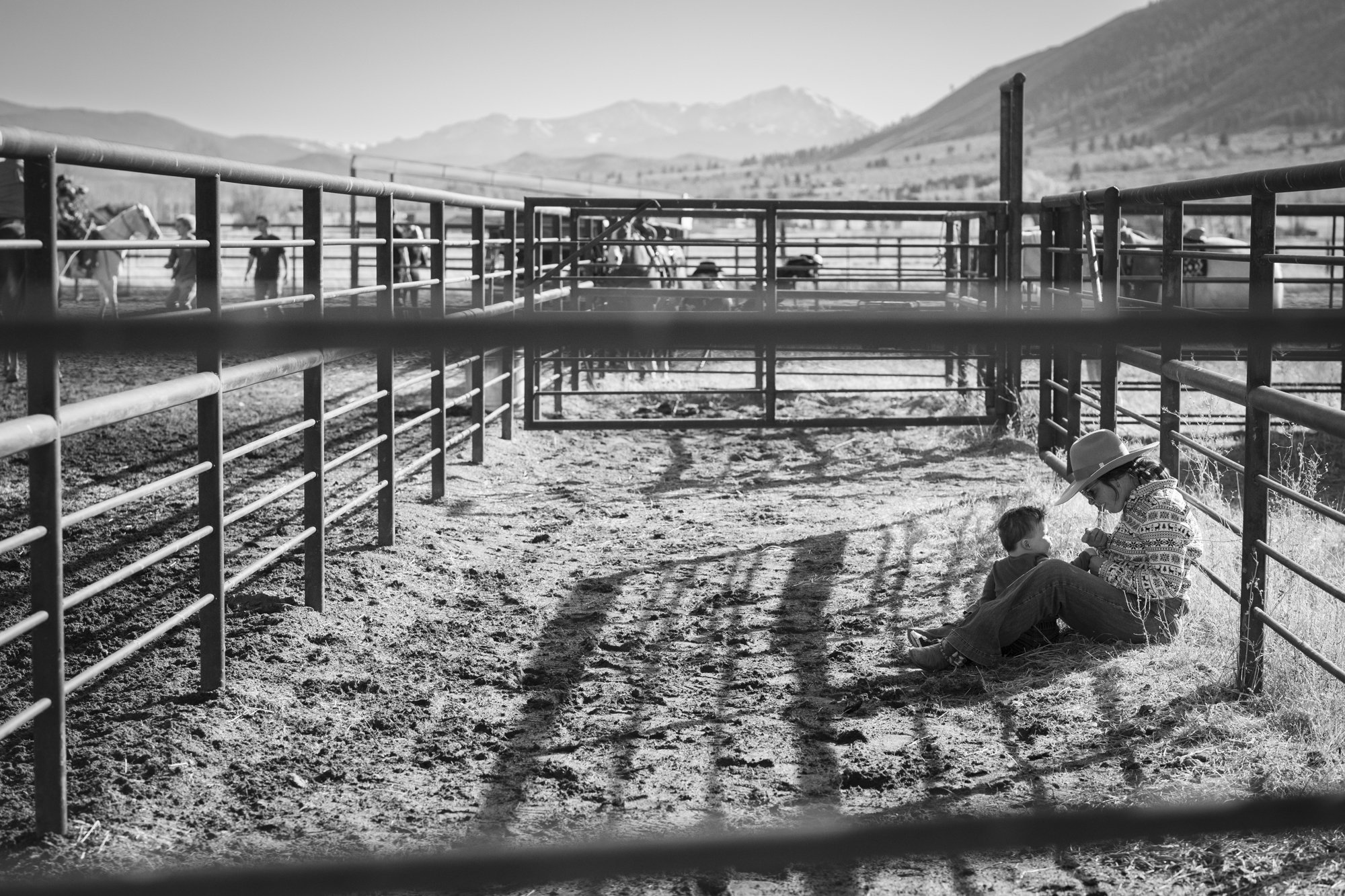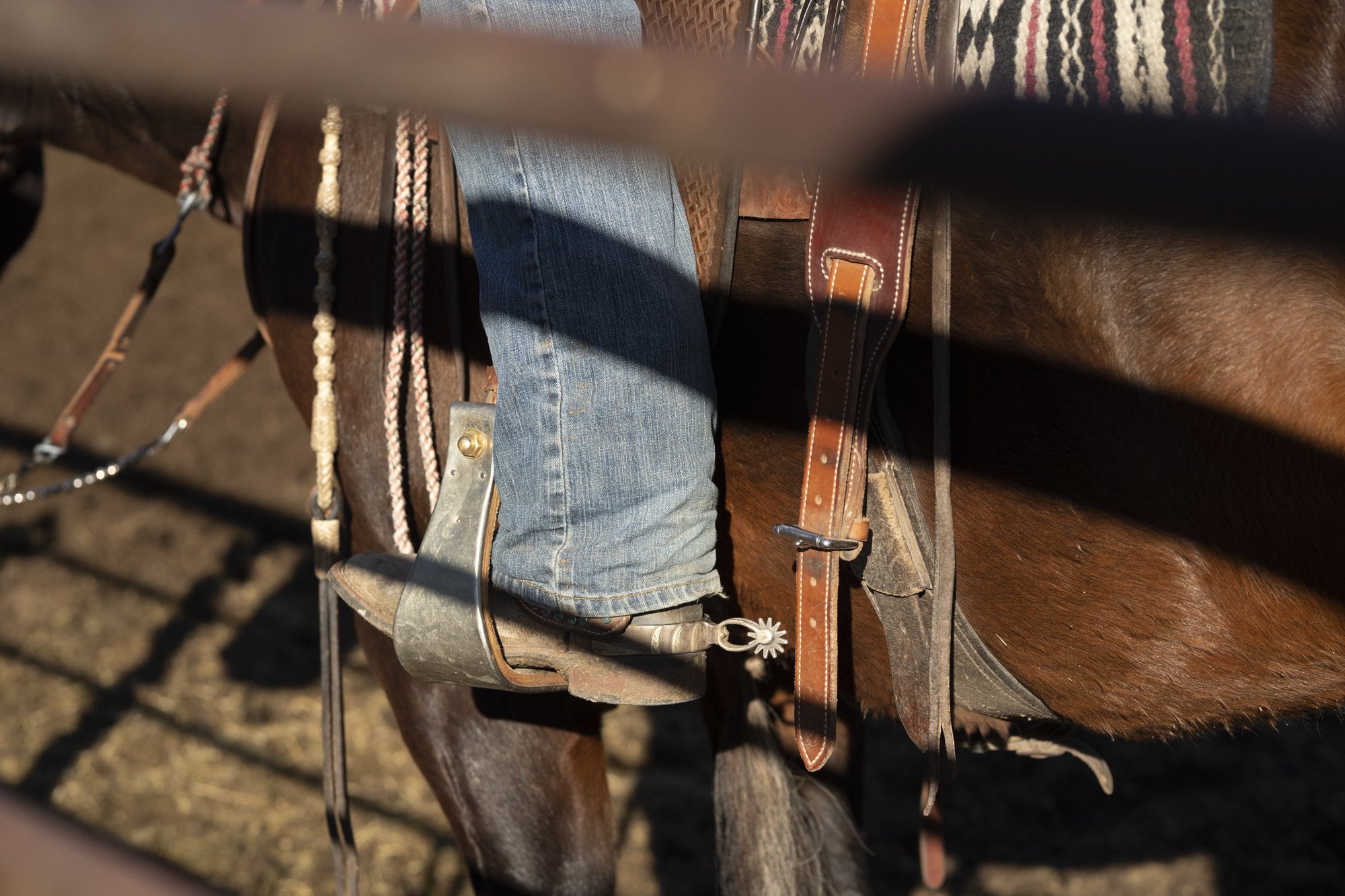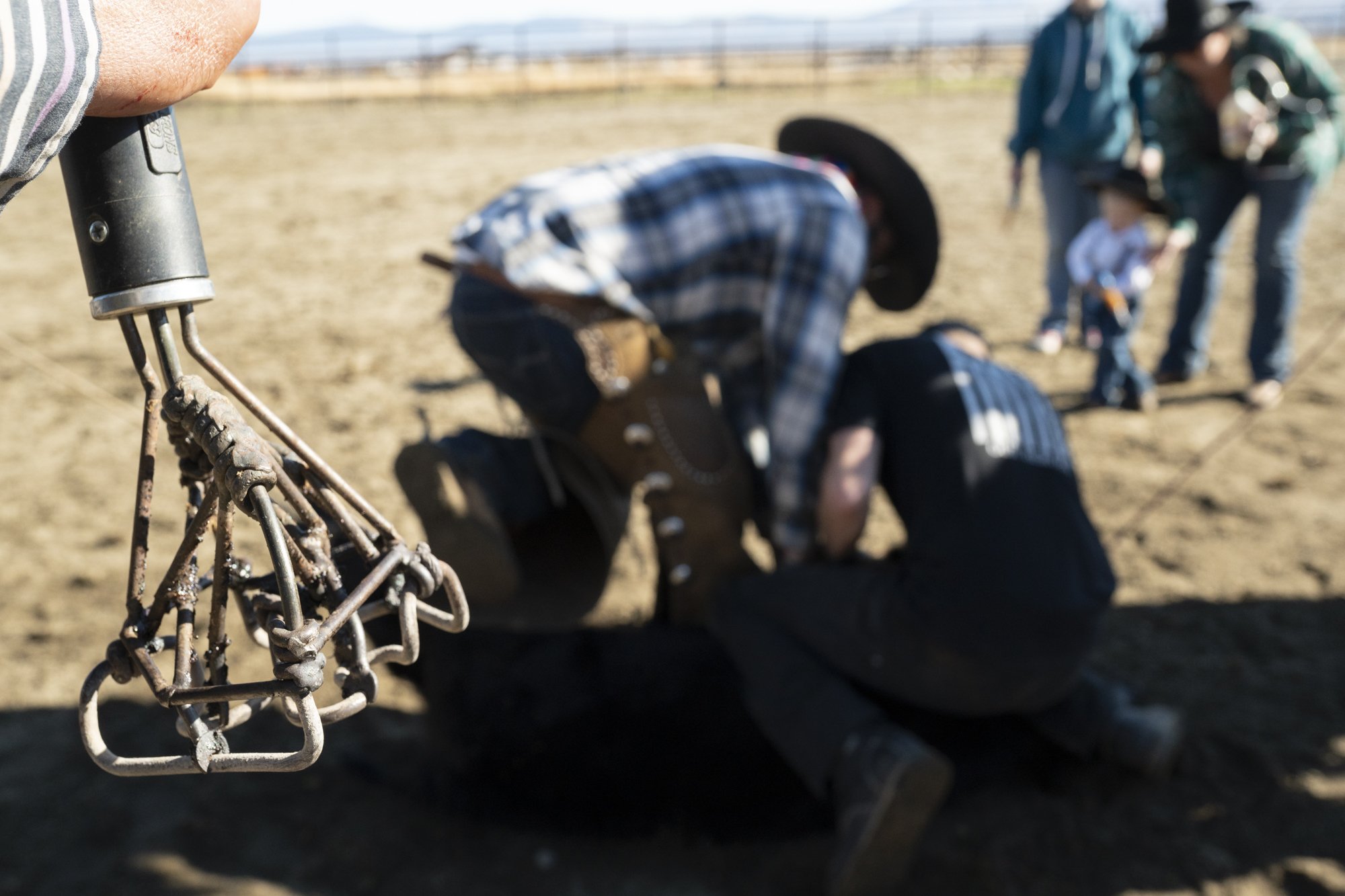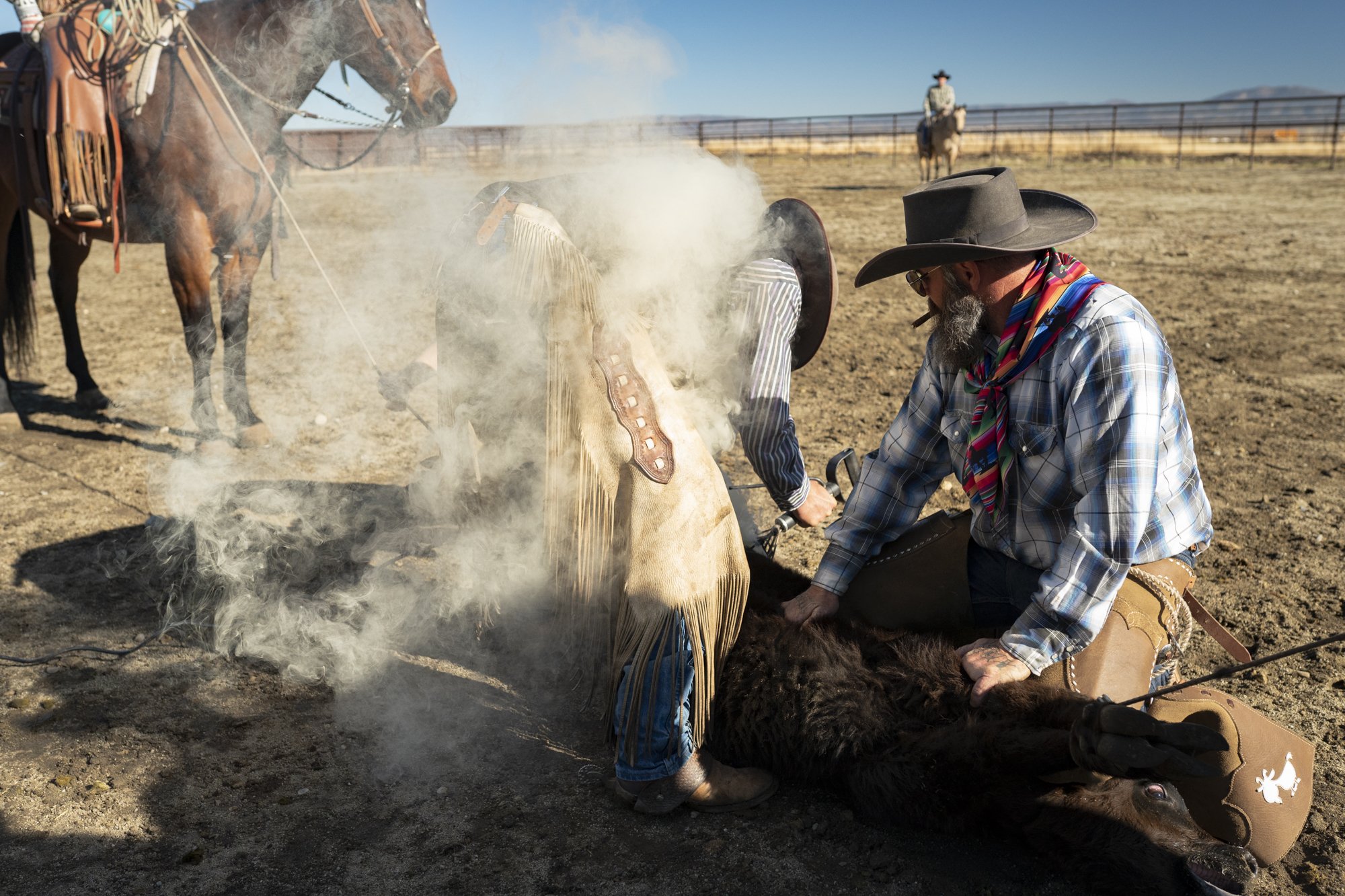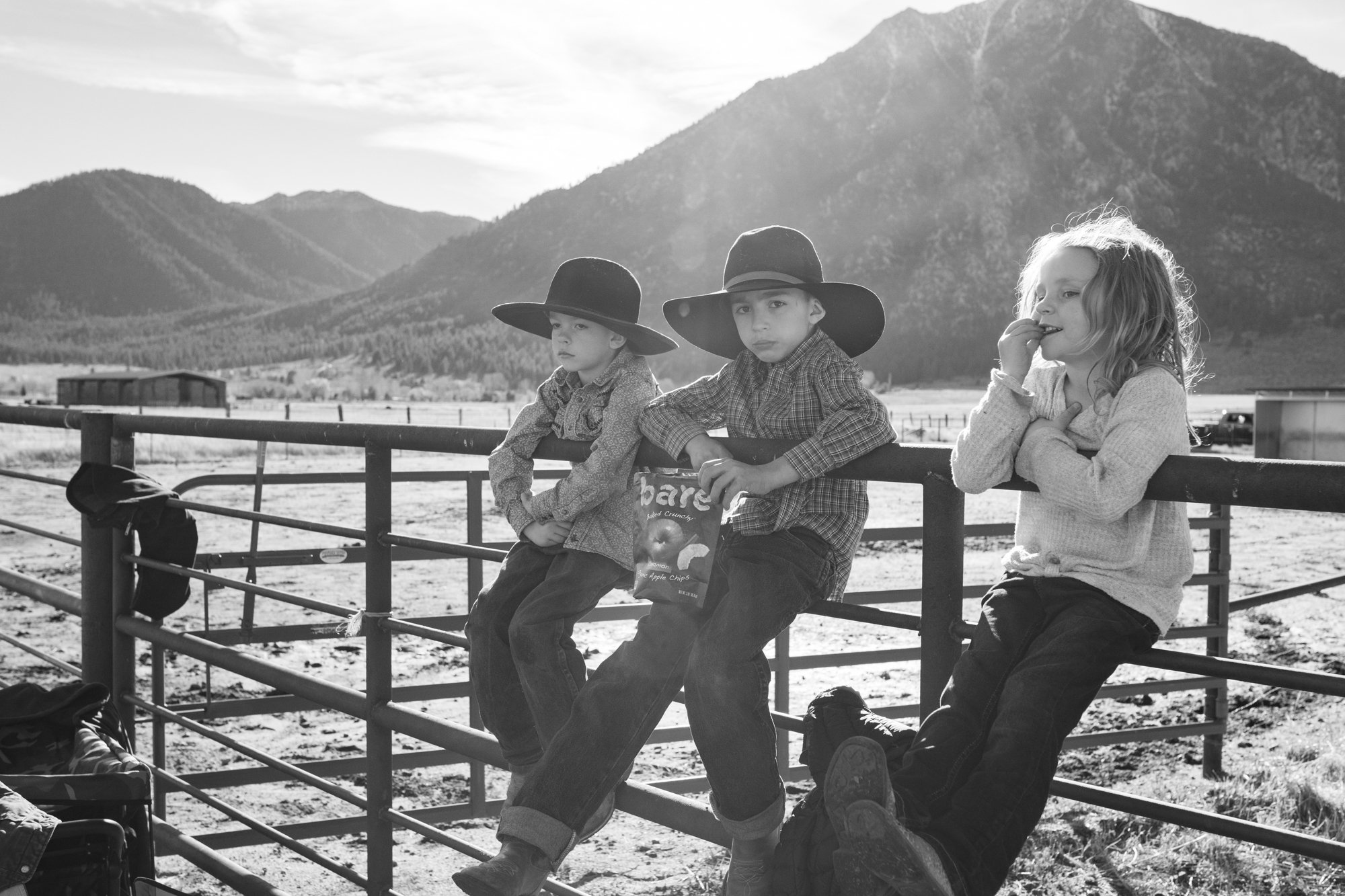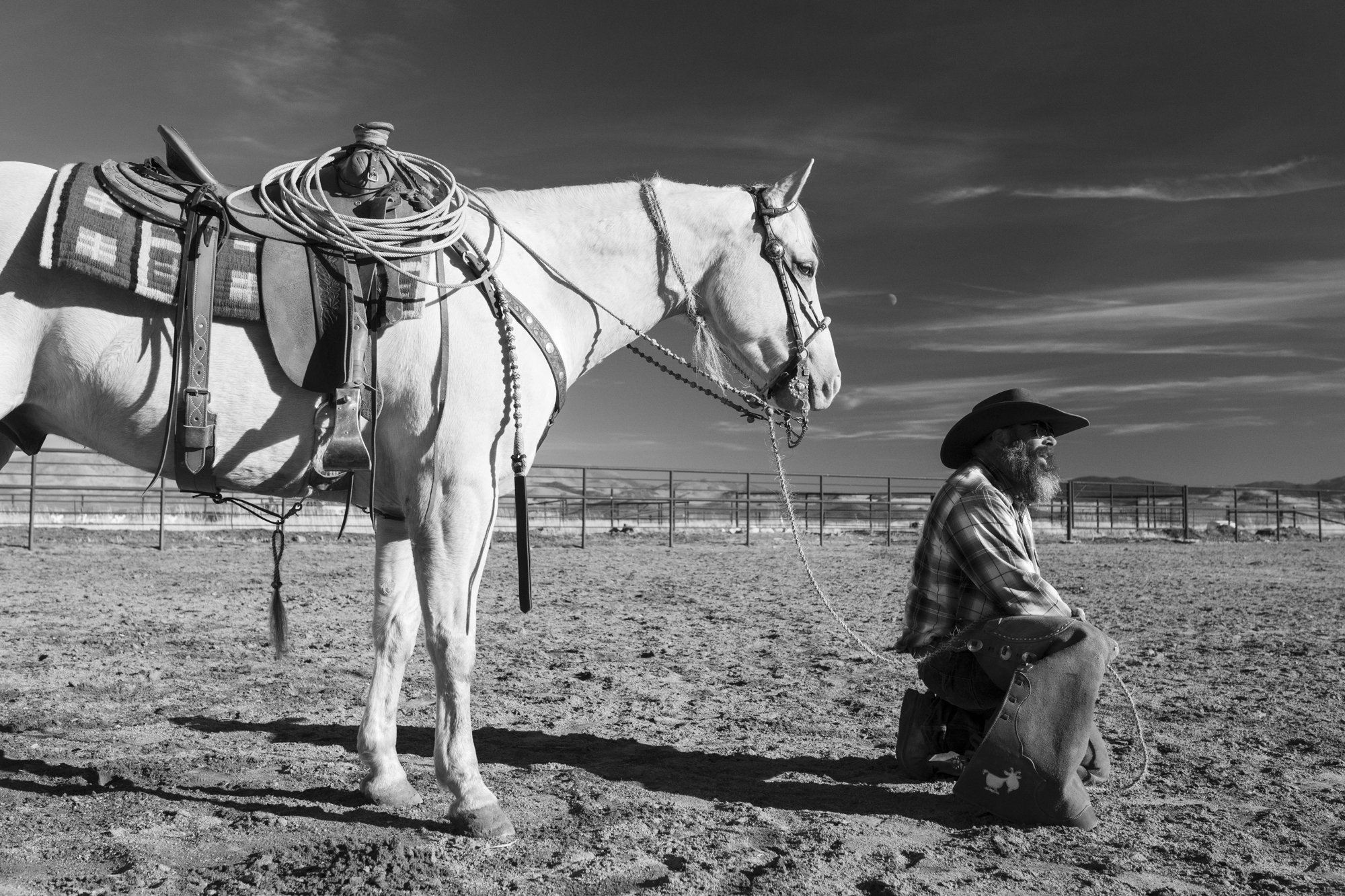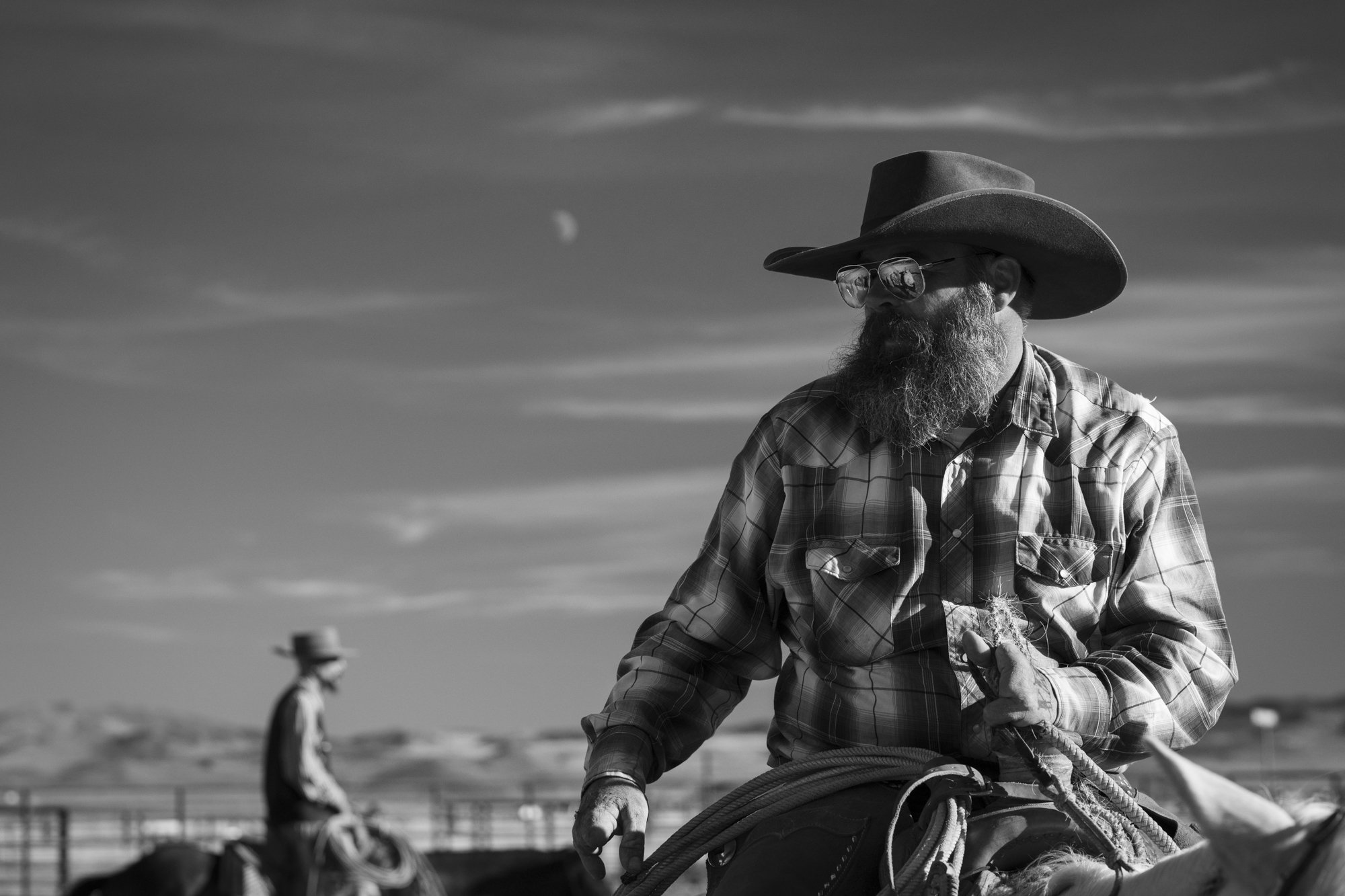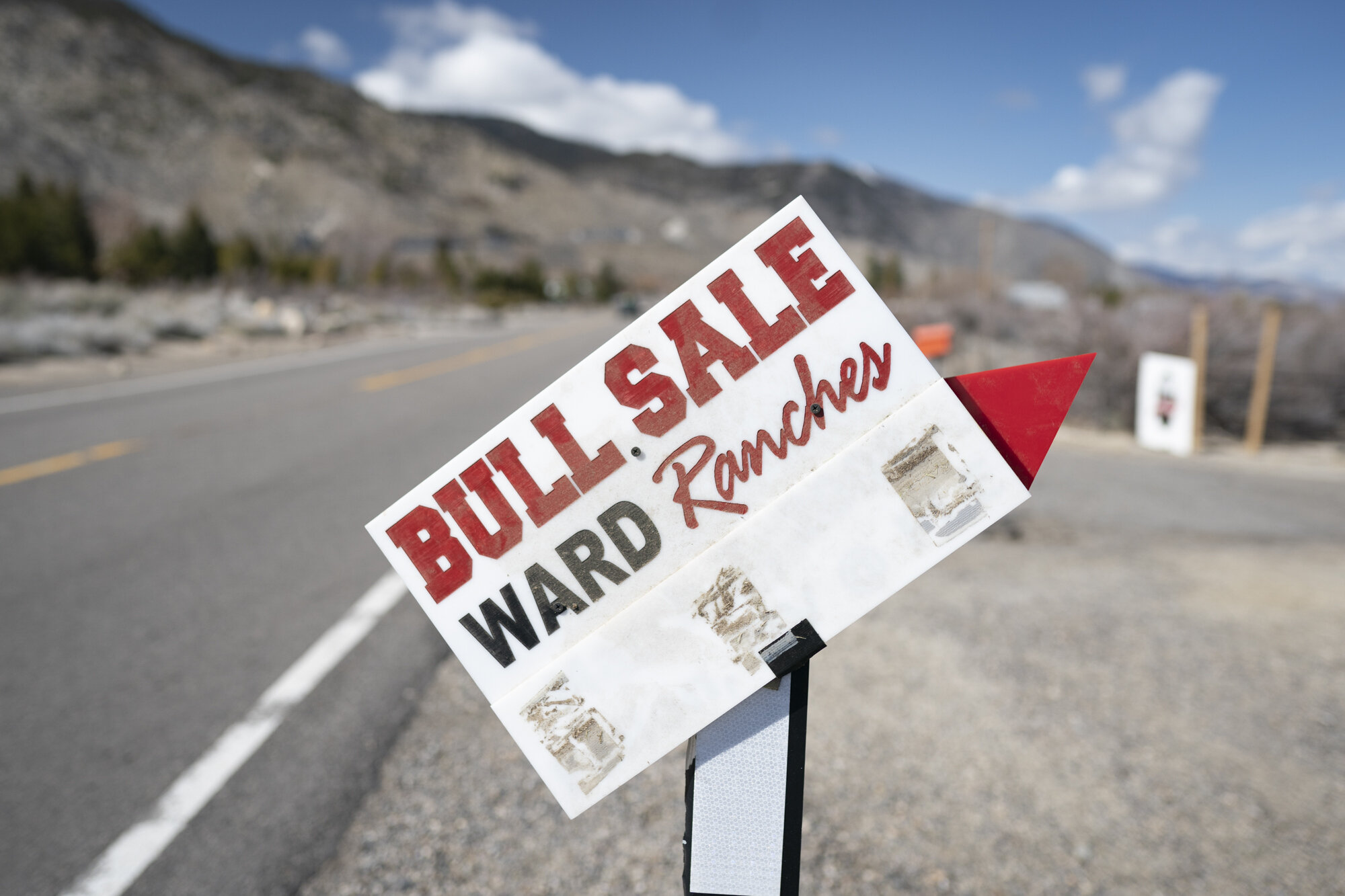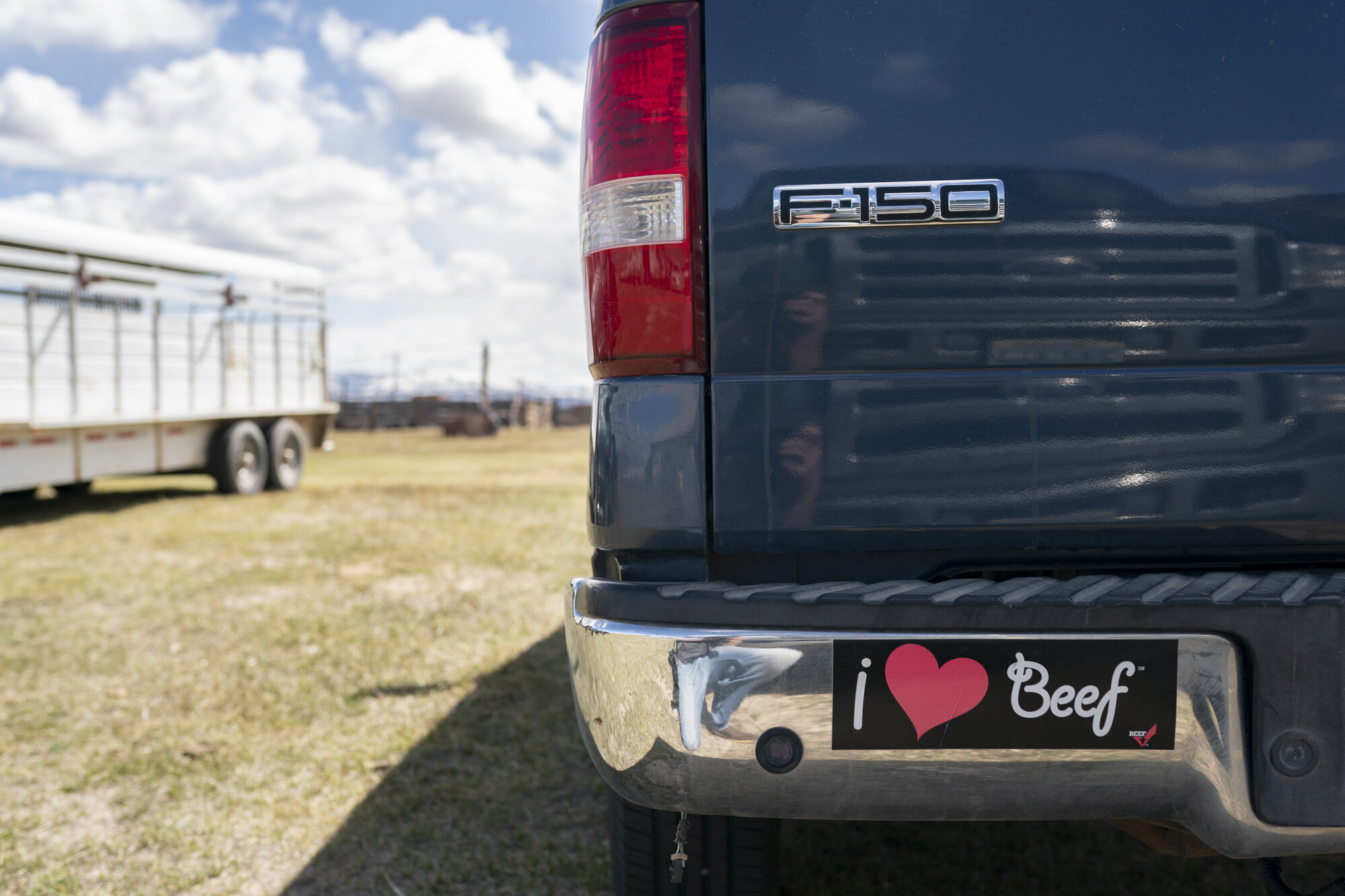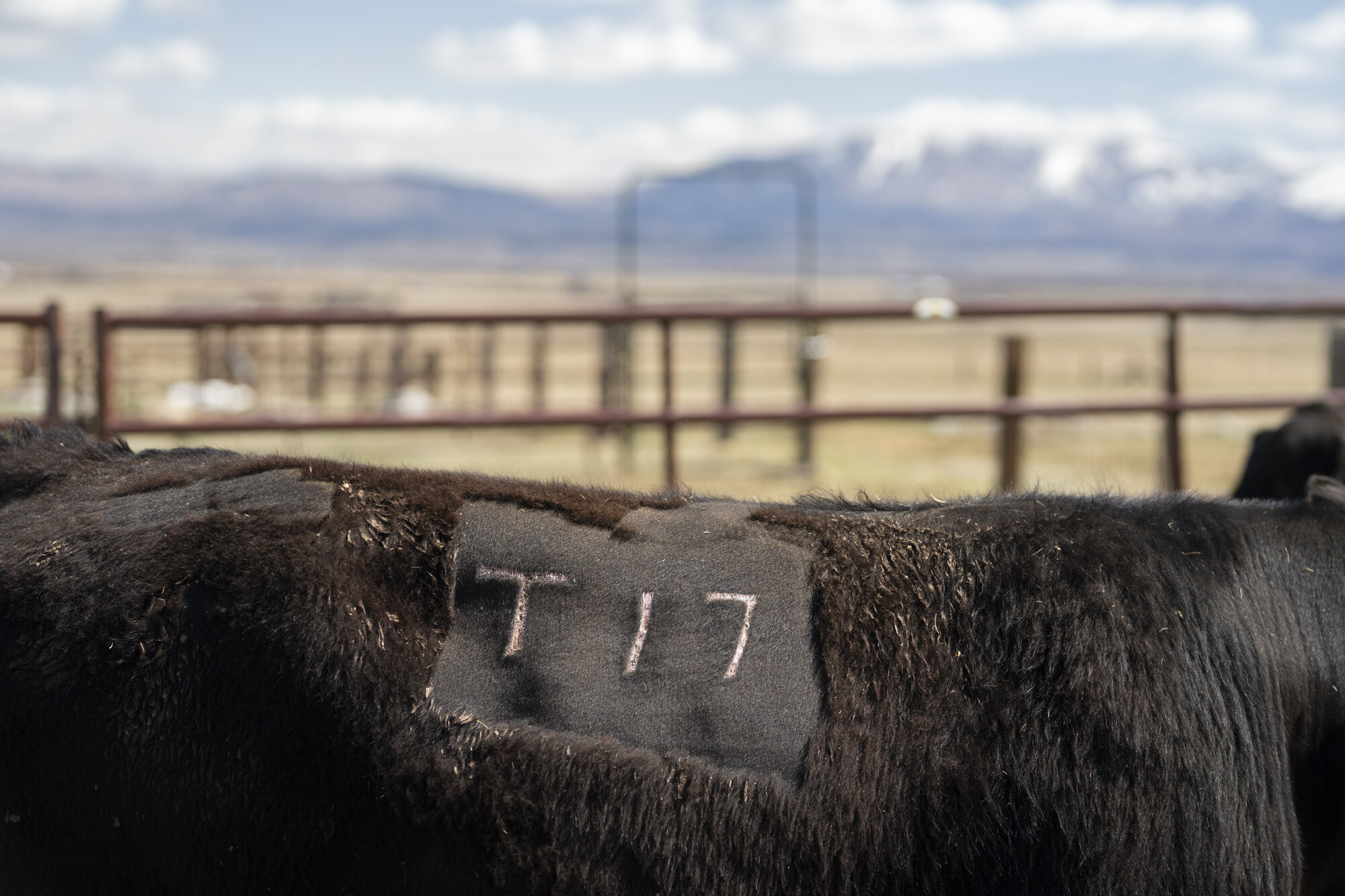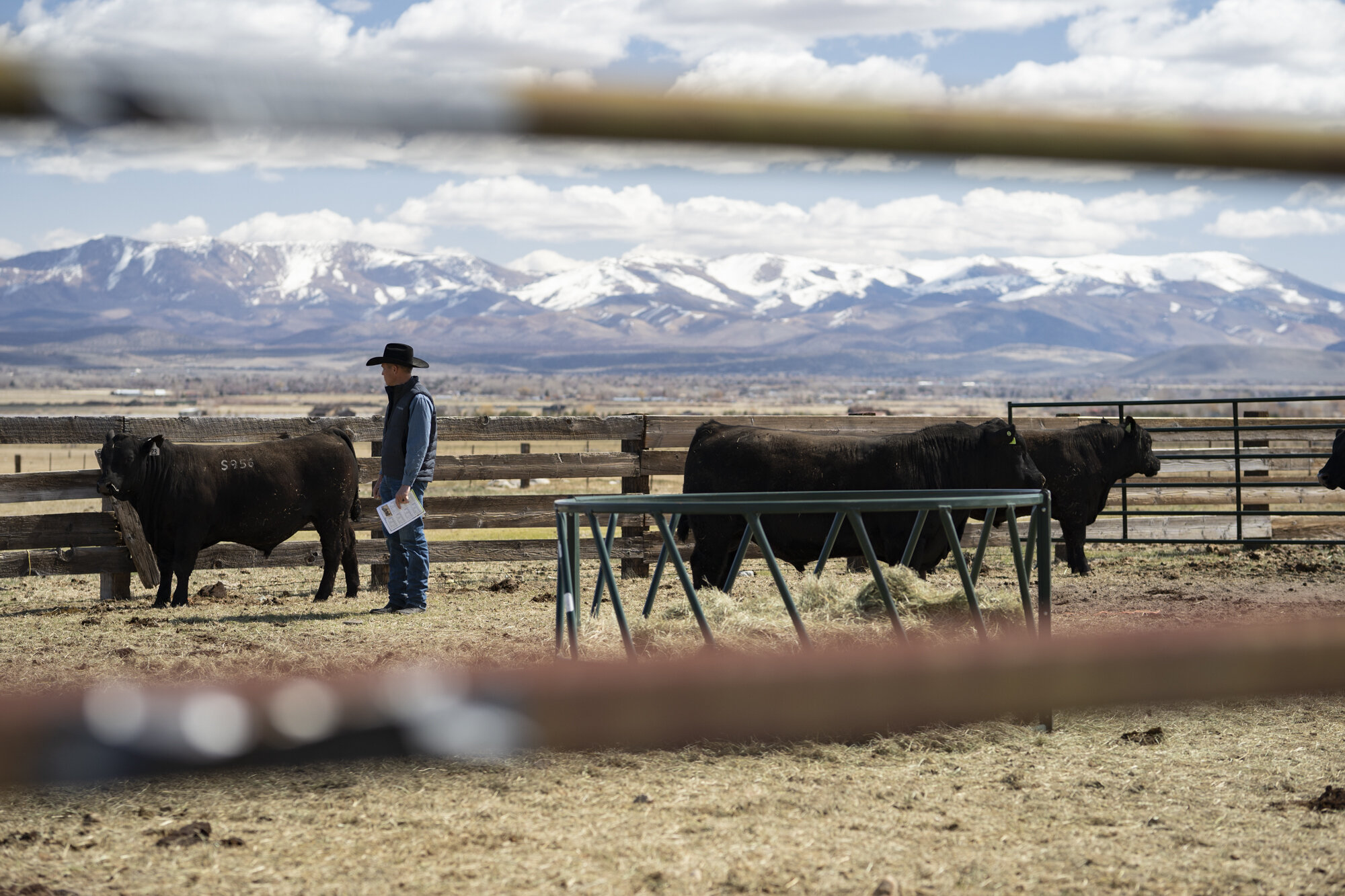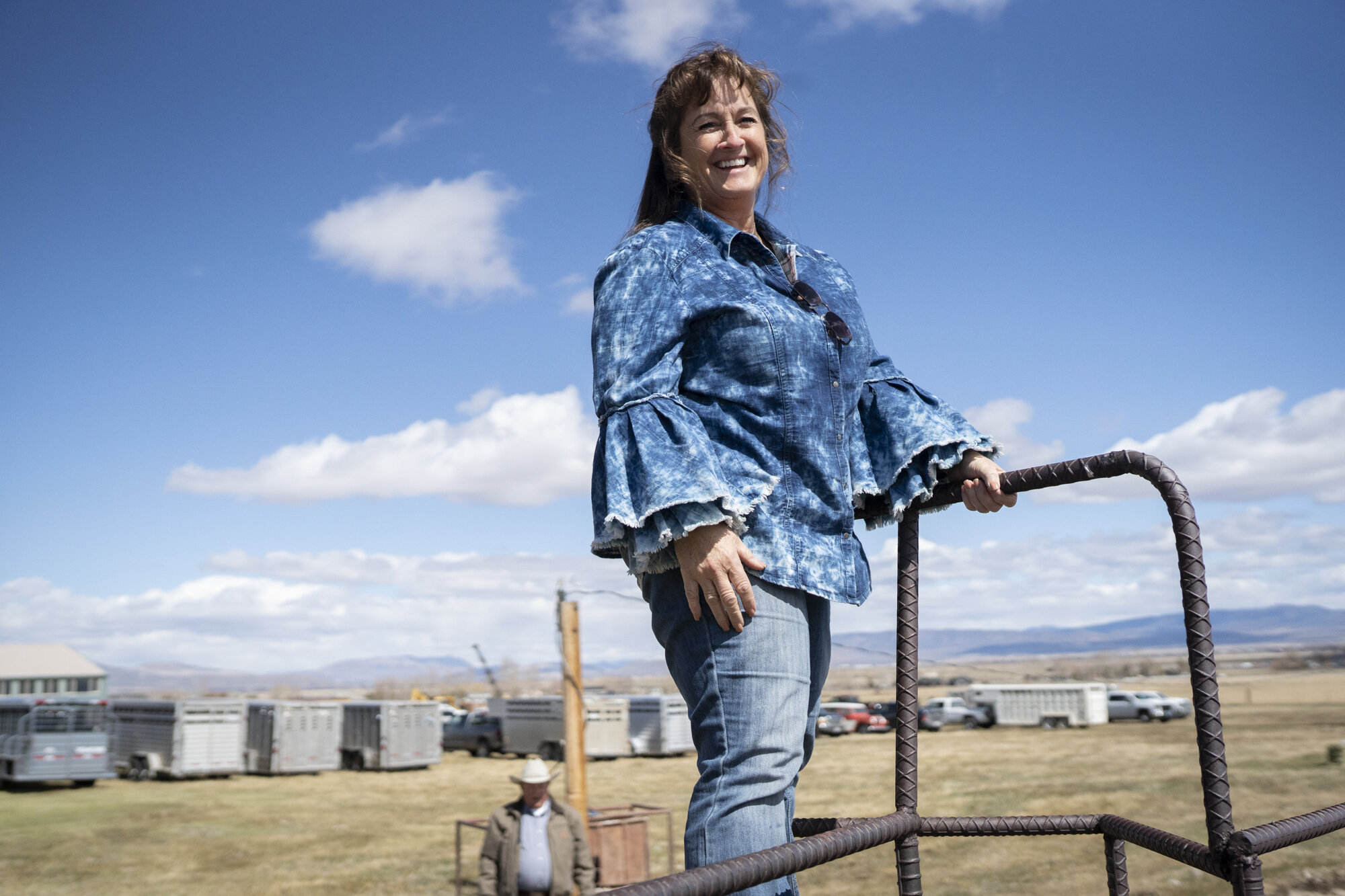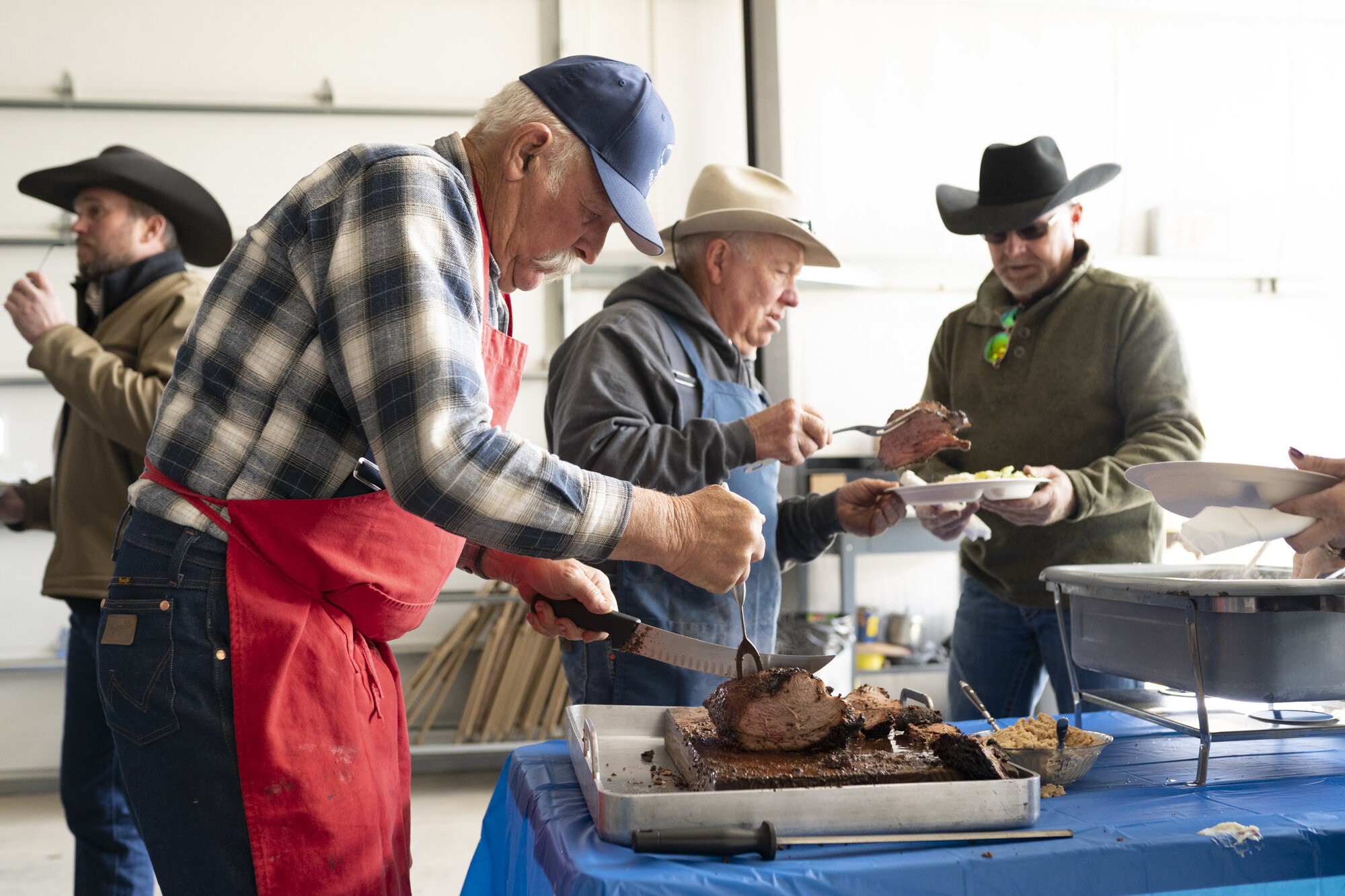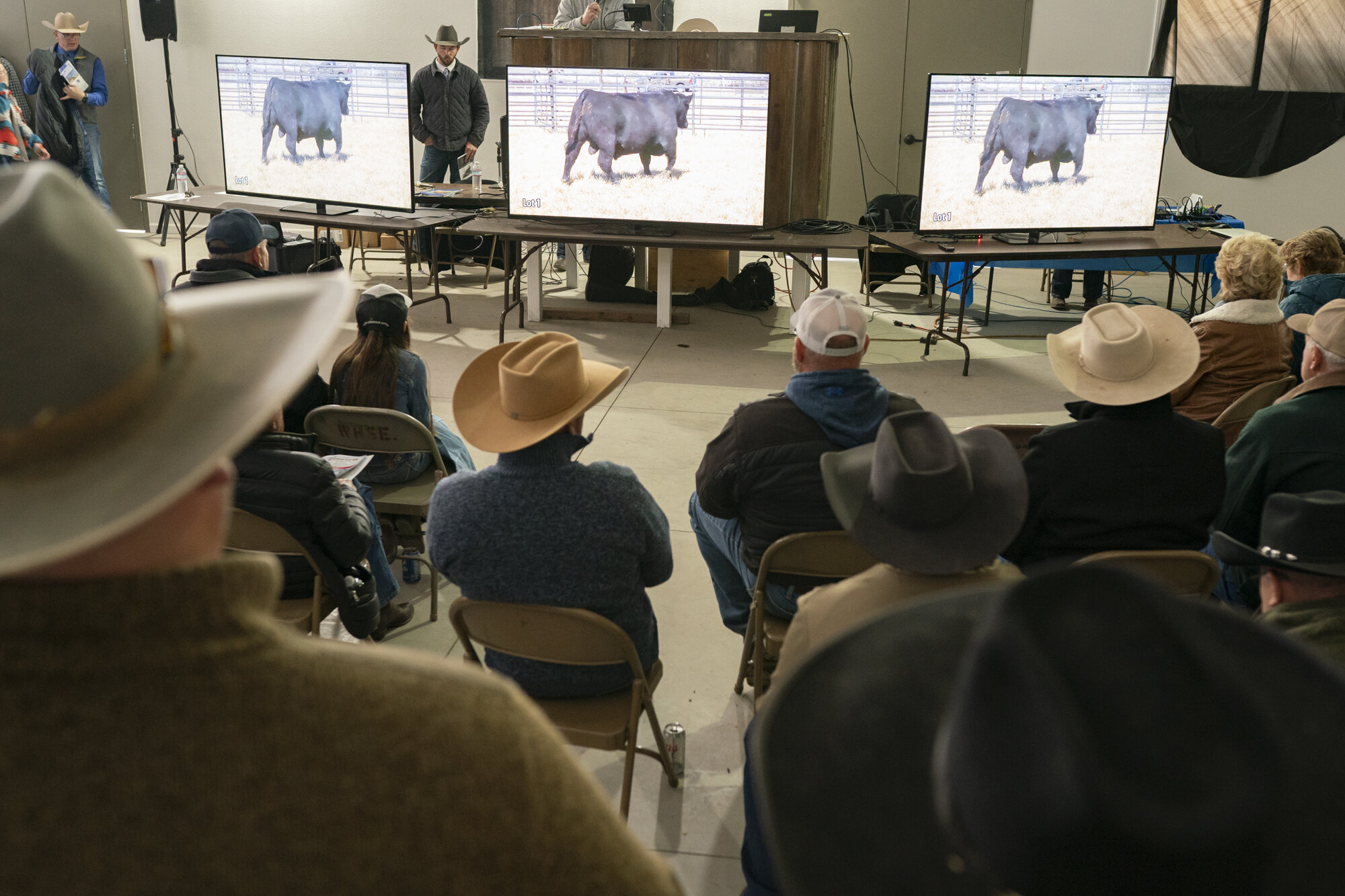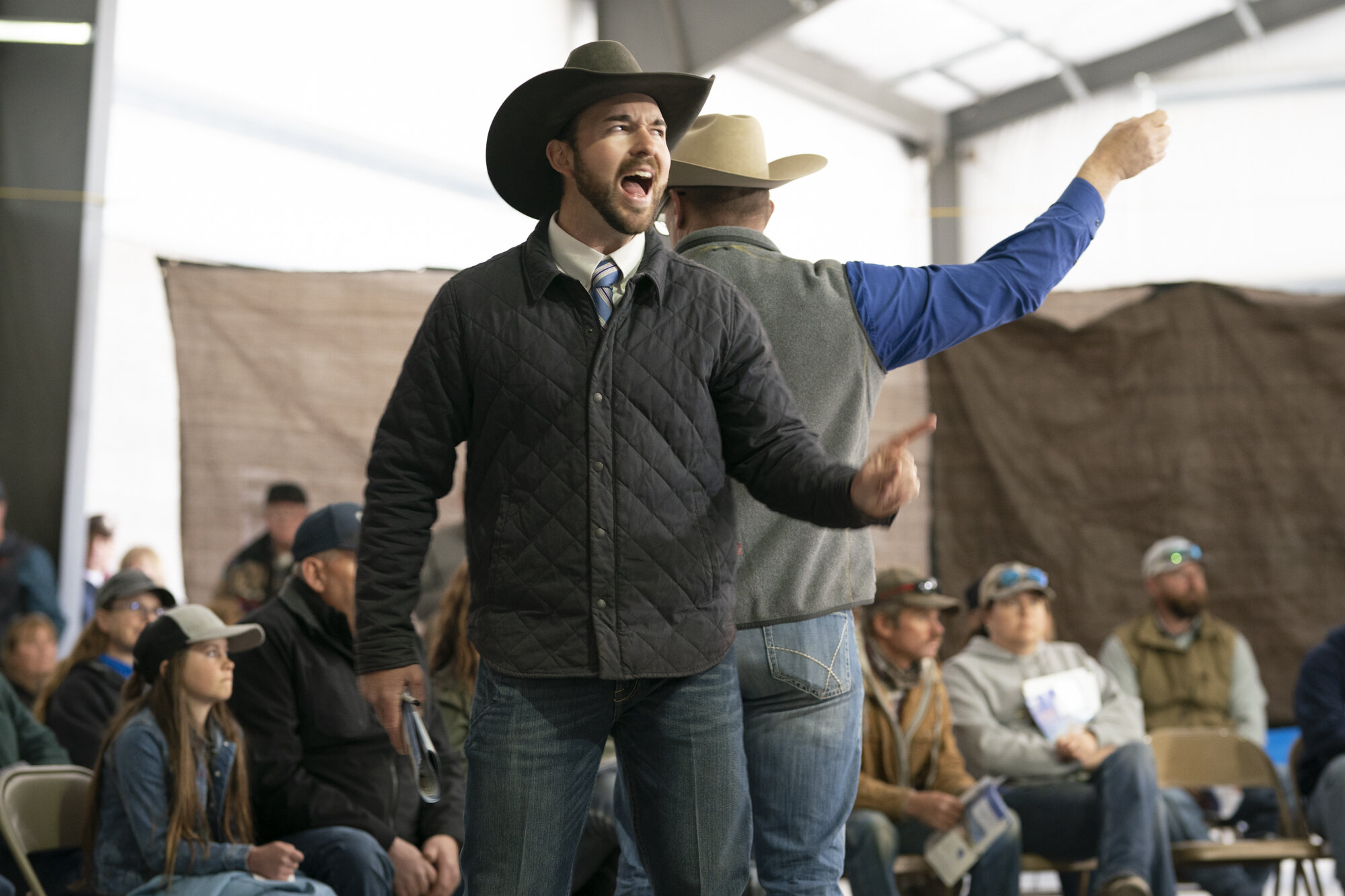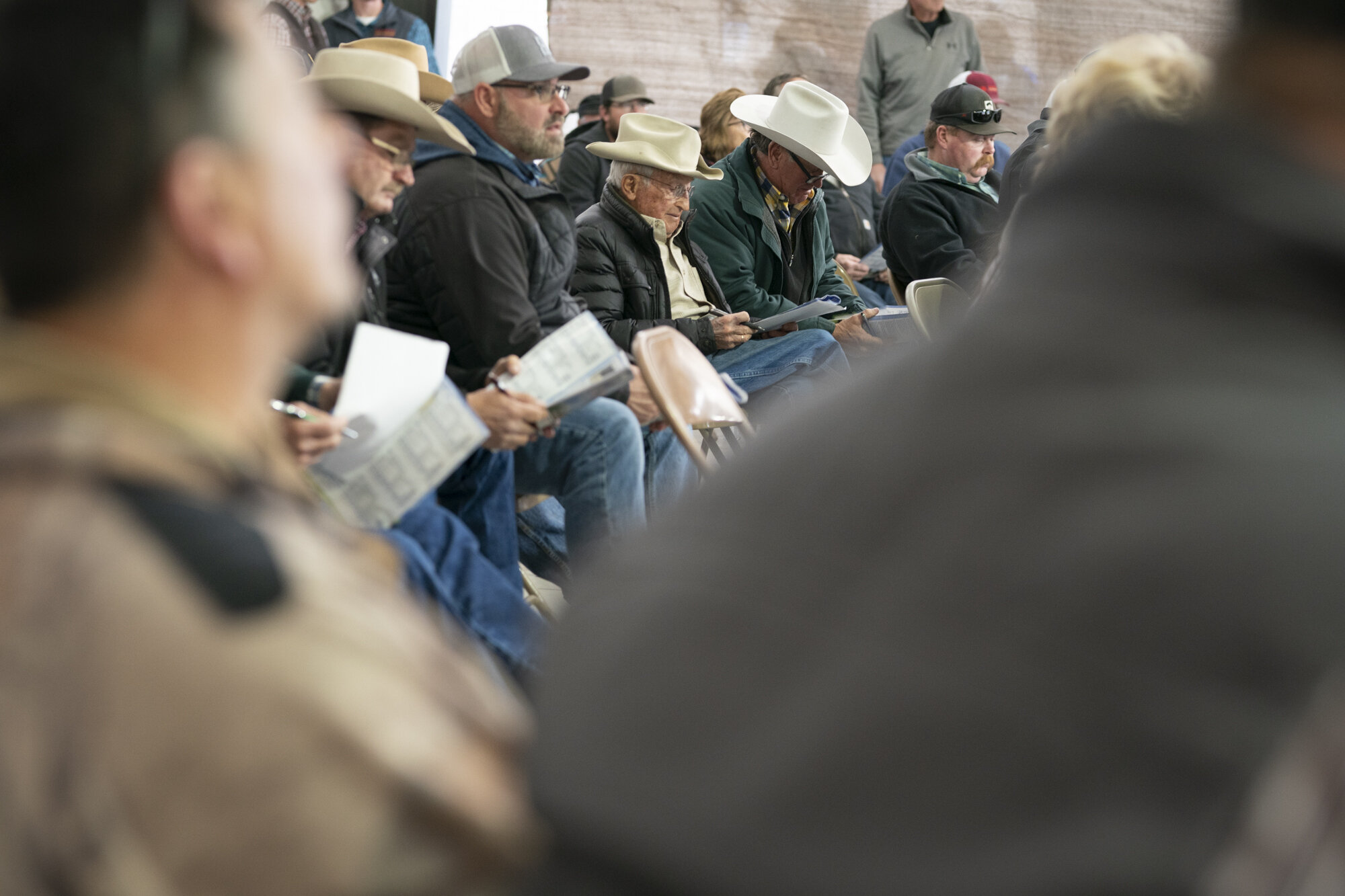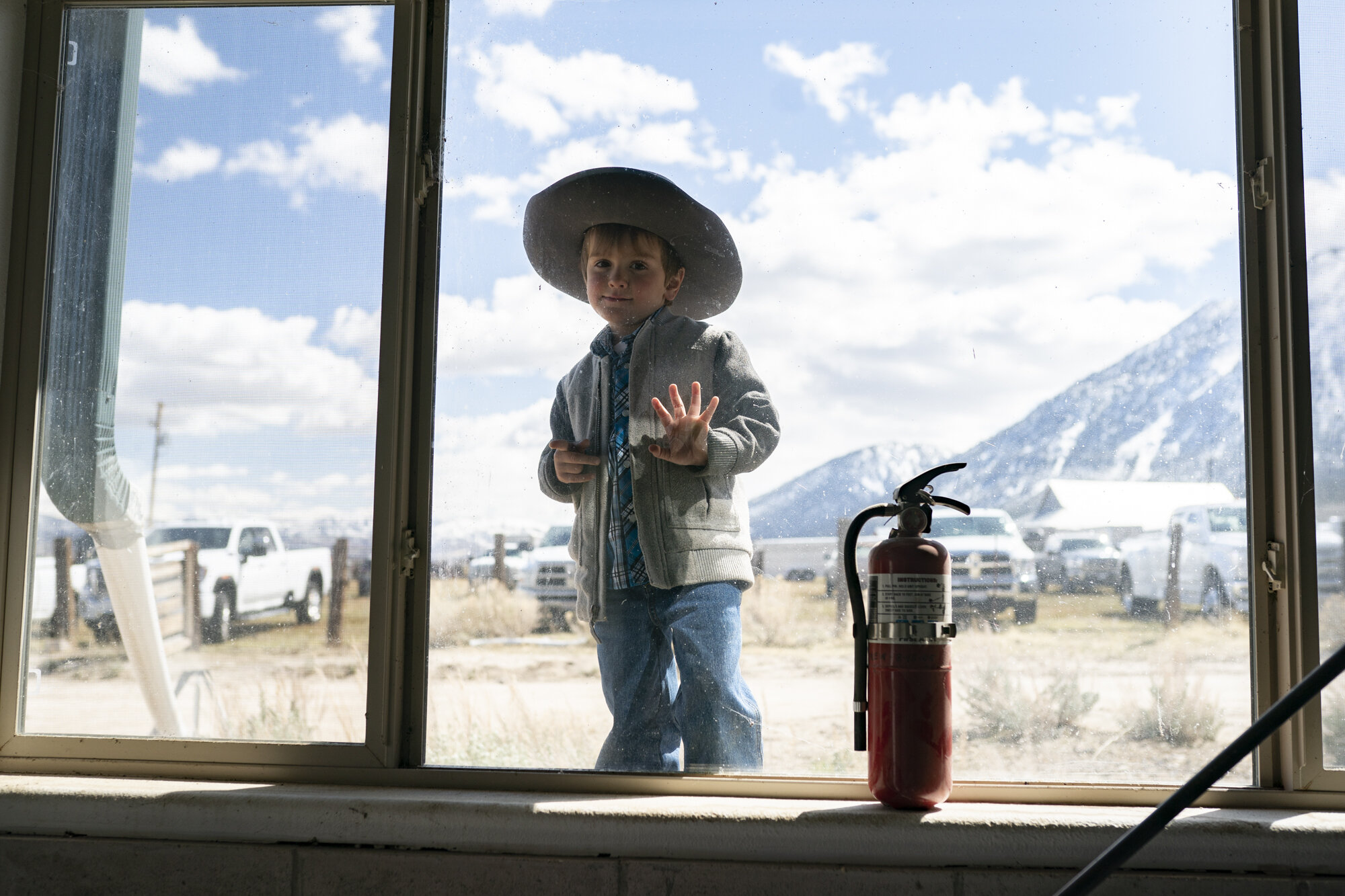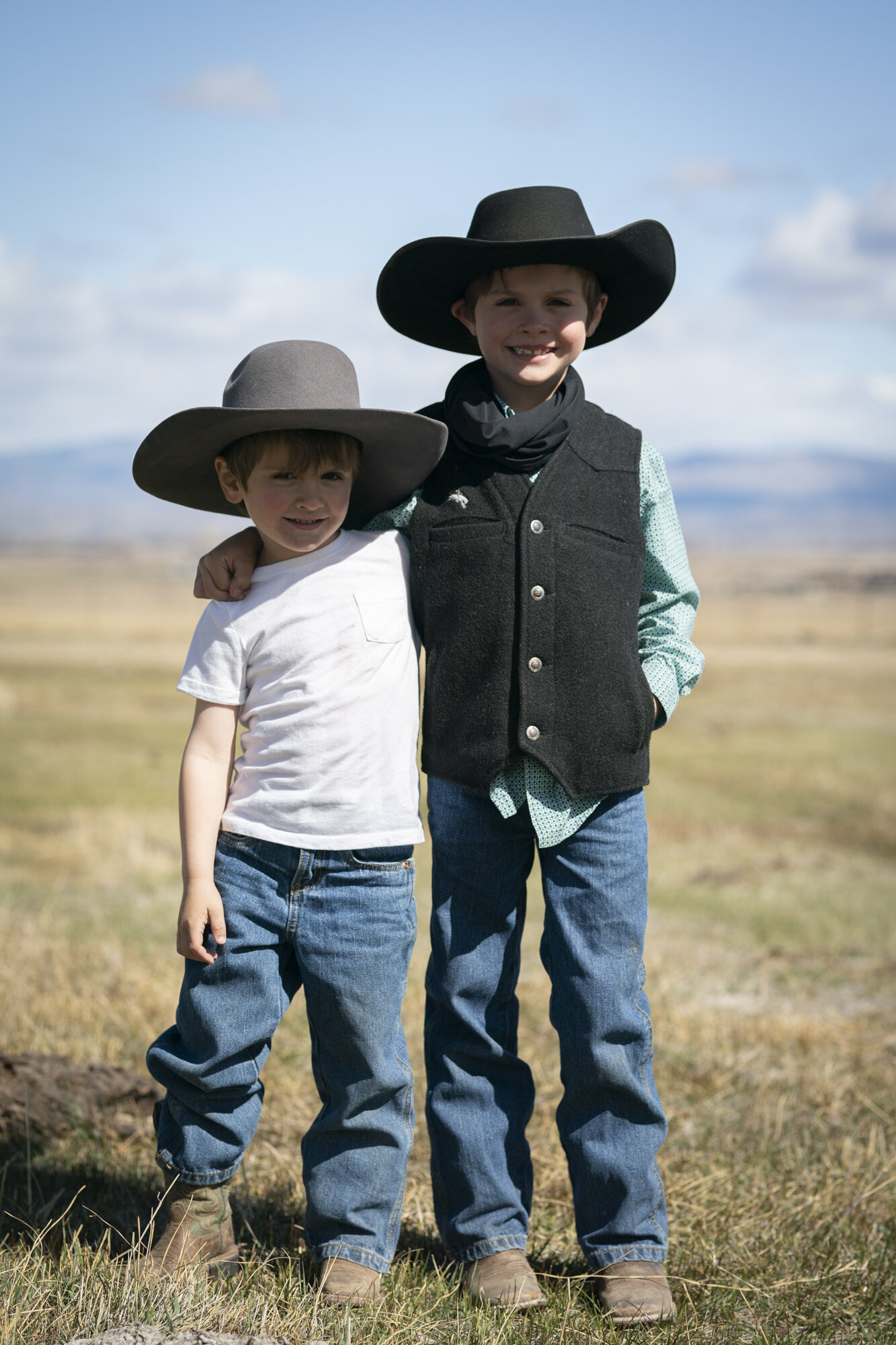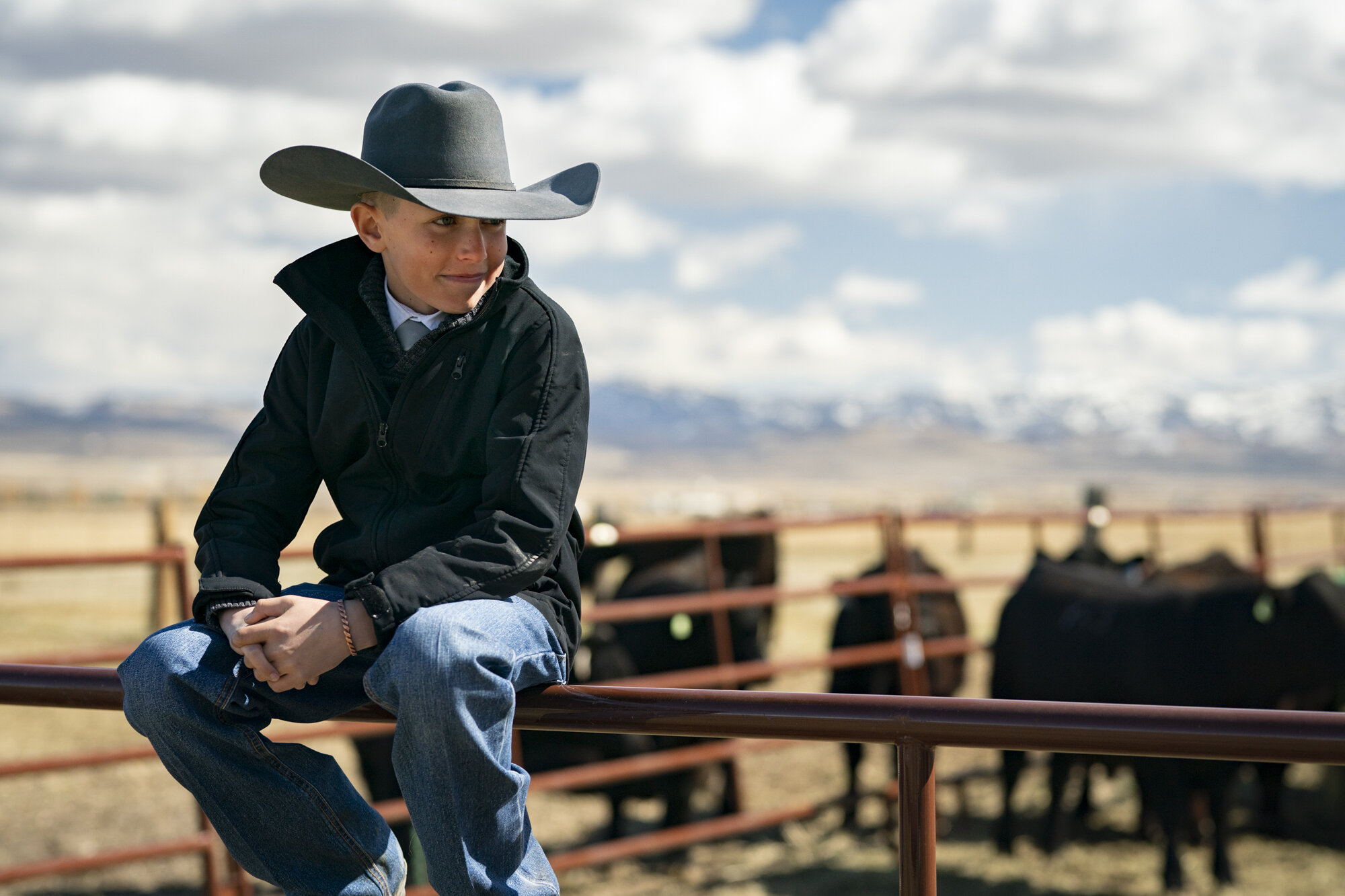Inside the Workshop of a True Western Craftsman
Custom Western Saddles
“If I created a really, really goddamn nice saddle, and some cowboy—or buckaroo or vaquero—rode that son of a bitch, but took care of it; if he burned the damn edge of the cantle binding off from draggin’ calves, or burnt the fork cover down with a groove where his rope ran, and he wore the flowers down to nothing, that’s a success. It ain’t the son of a bitch in mint condition that’s hanging in a barn somewhere.” That quote from Doug Cox might give you an insight to his personality, but there’s a lot more to know about the obsessed saddle maker from Grangeville, Idaho that’s still feverishly working toward better saddles 50+ years later. His stoic demeanor and unfiltered vocabulary might offer a rough first impression, but he’s sharp as a whip and two steps ahead of everyone. Despite being a world class artist, he retains no ego, is quick to laugh, and only answers your questions with honest thoughts. The kind of guy you never once doubt when he starts a sentence with “Fact is…..”.
Born in 1950, Doug’s earliest memories formed on the steer ranch his family lived and labored on for 17 years before renting their own. “When you were old enough to work, they worked your ass off”, Doug recalls. For him that was age 7, and a typical day started in the morning, milking cows and feeding saddle horses. In the winter they fed 2,000 head of steer with grain around noon and again with hay at night. Then it was back to milking cows, feeding saddle horses, fixing equipment, supper, sleep, repeat - a typical routine for everyone Doug knew, so he never thought to complain. At 8 or 9 he was put on a horse to start moving cows around, at which point, “you passed the dogs in rank”, he joked. In high school Cox found a job nearby working for a man who raised registered quarter horses, because he didn’t get paid at home, just fed. Other jobs followed; day working for a slew of ranches in the area. He also started stamping leather belts for beer money. The first one came out of shop class. “I backed the teacher up. He couldn’t imagine anybody in high school could do something like that.” Still, all of Doug’s long waking hours were spent horseback in big country where he met a lot of “shittin’ saddle makers”, until moving south in 69’ for an Ag college in Sheridan, Wyoming that had two sports - basketball and rodeo! So began his career riding broncs and showing reining cow horses and cutting horses. More importantly though, he was hanging out at King’s Saddlery after school - drinking coffee, shootin’ the shit, and becoming a recipient of the trickle down effect. Shortly after, the fascination with school vanished, and he was once again enjoying life as a drifting cowboy.
Towards the end of 1970 his number was picked for the military where he spent 4 years as a corpsman on an Orthopedic Ward. There he received forced knowledge of anatomy and physiology. Being up close and personal with broken people day in and day out taught him about “human construction”, as he calls it. More specifically it cued his one track mind into a would be blueprint for the opposite of a shittin’ saddle.
After the service, he wound up back in Idaho working in the logging industry, running a Cat and riding broncs on the weekend. That fall, his crew got snowed out and told to sign up for their “rocking chair money”. Never one to welcome idle time, he got the leather bug and decided to get serious, combing Burton’s Leather Craft catalogue and “ordered me a shit ton of tools”. First up were belts and women's handbags which didn’t exactly quench his thirst. Then out of nowhere, he received a call from an old rodeo friend wanting the interior of his Cadillac El Dorado stamped. His first real job! The arm rests and doors were barely finished before the owner got drunk one night and wrapped it around a telephone pole. So his big money job went out with a hangover, but business still progressed and people took notice. In 76’ the legendary saddle maker Ray Holes offered him an apprentice job, as it seemed Cox’s particular knowledge and talent was taking away customers. An incredible opportunity for Doug to learn the business from the ground up! His days were now spent repairing equipment and crafting leather into pouches for vice grip pliers, chaps, and axe scabbards that got sent all around the world. “There was no scrap. We used everything till there wasn’t any left, and turned it into money” says Cox. $2.85/hour sat just fine with him because the real payment was education, and the promise of a position building saddles after 5 years.
He became a sponge. “You’d go home and try to do everything they did as good as they did. Some things you pick up pretty rapid, and some things I’m still working on today. Nothing is a done deal. Every day is brand new.” Aside from Holes himself, Bob Kelly was Doug’s biggest mentor up to that point. 3 years after Cox signed on at Holes’, Kelly, who built 1,326 saddles in that shop, retired. So Cox was thrown into the job simply because there wasn’t anyone else. He was forced to figure everything out on the fly. “I asked Ray Holes, what happens when you cut out a seat and stamp it, and it stretches, and you can’t get it to go?” Holes bluntly replied “you cry a lot”. By April of 81’ Cox had an Ivy League Degree in making saddles and successfully co-authored 210 riding saddles as well as 360 pack saddles.
Next chapter: Montana - 3 Forks Saddlery. There, letters started coming in complimenting Cox on his seats, and the reality of his seeing his own name on the marquee began to materialize. He left 3 Forks before too long and did some ranch work for a guy in Madison Valley to earn rent money, but made it clear from day 1 that building saddles was the priority. Next came an opportunity to sell those saddles at a Western store on the four corners in Bozeman. And not much later, with 200 saddles to his sole credit, he moved into an old vet clinic building and things went gang busters. “You’re always wondering if you’re gonna starve to death when things go to shit. So I was surprised when the business kept coming”, says Cox. The Montana winter of 97’ didn’t quit. Or as he puts it, “the one that soured my ass”. That October he helped a friend sort replacement heifers and ween and ship calves. “There was 2 feet of snow and it was 21 below zero. On May 15th we still had all that snow in the yard with a whole lot more on top of it. I had enough”, Doug recalls with tangible disdain. In December of 2000 he and his wife Deb, closed on a house in Gardnerville, Nevada, where you’ll still find him today. They did all the moving themselves. Tools, leather, 10 horses, and every barn/house furnishing you can imagine. 14 hours each way. Over and over and over. That put him 3.5 years behind on orders with people calling wanting to know where their saddles were. He just kept plugging along and tinkering with better designs. Cox got very intense over the structure of his seats, asking tree makers to institute changes that would allow for necessary improvements. 911 struck a massive blow to the world, launching a political and economic roller coaster directly impacting his business. Amongst the obvious wreckage, big outfits were getting scooped up by mining companies, and kids didn’t want to cowboy anymore. Fewer cowboys equals less demand for saddles. In classic Cox fashion, he took the ride but didn’t spend too much time worrying. Instead, focusing on getting better, and really, that’s been his psychology all along. He knows the grandest peaks are always followed by a valley no matter who you are, and the only answer is to keep putting out exceptional products. “I ponder a lot of shit and wonder why the hell am I doing what I’m doing? And then you start to think back about how everything that you did taught you what you’re doing now, and that gives you the path to continue”.
The full time saddle maker/part time philosopher has damn sure earned his loyal and diverse clientele. Everyone from the working cowboy to folks in Texas who never bother to ask the price of a custom Full Flower. His saddles have been shipped to countries like Dubai, Mongolia, Australia, and Canada, “but probably not all 50 states.” Advertising has never been a priority for Cox, trusting that his faultlessly functioning art will lead to word of mouth referrals. There’s one family in Montana that’s bought close to 20 of his saddles over the years, so imagine the conversations they’ve had with neighbors. He believes in taking care of people and appreciates unwavering loyalty. So if you’re buying a custom Cox, then chances are your package will arrive with a little something extra. That might be added stamping, a breast collar, or whatever else he feels like throwing in. After all his years in business you could count on a few fingers the number of clients he’s had trouble with, but they didn’t know what they wanted to begin with. One such customer who couldn’t tell a mare from a mule had the nerve to complain after receiving his custom Cox. So Doug spent months ripping it apart and building it back to the new abhorrent specifications. “Right before I was about to disconnect the phone in Montana, that son of a bitch called wanting to order another saddle”, he recounts with a chuckle.
At 75 Doug is still pushing his art. After long days wrestling with leather he sits on the couch under a Bison mount, with sketchpad and pencil in a relentless attempt to crack the code on a perfect wild rose to elevate the stamping on his next saddle. When asked why, he stops, stares off for a while in contemplation, then says “it’s just my nature”. Cox wants to feel good about every final product leaving his door because he won’t sleep at night knowing you aren’t 100% satisfied, but that’s not the whole story. In the most humble way possible, with money and fame aside, he yearns to be the best. Your baseline Doug Cox saddle goes for about $4,500, and he’s happy to make that for anyone who asks, but the unconventional creator in him requires ambitious challenges. Doug has been inspired by so many of his predecessors and contemporaries over the years; Ray Holes, Jerry Holes, Billy Gardner, Don King, Merve Ringelo, and Al Stoleman to name a few. According to Doug, “Hamley’s put the best seats in saddles that ever was, but they never made anything fancy”. Visalia on the other hand, is top of the heap in his eyes because of their combination of functionality and stunning aesthetics. Visalia stopped making saddles in the 60’s, yet he still sees them on a pedestal as daily inspiration. “When you saw something you liked, you were a coyote. You just kept chasing it till you got it”, he says. That’s why he decided to make a Visalia style saddle that took up 3 years of his life. Mounting silver to the horn, gullet front, and swell caps alone took he and Ron Meuws (silversmith) three 18 hour days. Nobody asked him to build a $165,000 saddle full of silver and rose gold (currently for sale). It was purely an itch that demanded scratching. Doug genuinely cares about the art he puts into the world, regardless of whether it gets purchased or not. His cumulative life experience in and out of the saddle fuels an insatiable desire to create the perfect saddle. Of course this is a futile effort, but Cox will be the first to tell you that “insanity is cheap”. And as Bob Kelly once told him, “the day you make the perfect saddle, you’re dead”. On the other hand, if a guy like Doug doesn’t have something to shoot for, he’s as good as dead.
I pulled into Doug’s house one day as another pickup drove off in a huff. Turns out that person had come to offer $50,000 for one of his bridal horses, which he promptly turned down. Why? “Oooohh…….I think a lot more of my horses than that” he said sentimentally. Driving by you’d never know what happens in the nondescript building that turns out world class leather products, and that’s the way he likes it. Interruptions are undesirable at best. The work is all that matters. If you’re lucky enough to get in, seeing the artist at play is something to behold. He’s the only one there, but you never think twice about who the owner might be. It’s Doug’s place and they have a relationship. One complimenting the other, almost symbiotically. It’s the Western version of a one man barbershop that’s organically and unknowingly grown over time. In winter months, the wood stove holds a perpetual fire that warms the walls adorned with hunting trophies, Charlie Russell prints, photos of saddles, memorable bronc rides, head stalls, breast collars, hundreds of hand tools, and a beautiful set of long horns. Piles of the finest leather here, there, and everywhere. Archaic leather equipment foreign to anyone outside his industry. Scattered saddles in various stages of completion - some made for fun, for customers, and others just to look at. The only soundtrack is a crackling fire, his grazing horses, and whatever Mother Nature decides to muster up that day. He’s locked in to the work with no need for entertainment. His eyes never divert from the leather when reaching for tools and you get the feeling he could maneuver through the impeccably cluttered shop blindfolded and never miss a beat. If you poke around too long you’re sure to stumble on a few revolvers and Winchester repeaters, loaded of course. His shop is exactly what you’d expect of someone that has spent a life in leather. As usual, Doug is currently back ordered on saddles for clients new and old, near and far. He’s in a good place - people still want a Doug Cox saddle. He jokingly baulks with frustration about being busy, knowing full well that’s all he wants. Then goes on about a new saddle he’s cooking up. A Mother Hubbard,which was a popular style in the 1860’s, but people don’t think about them much anymore. They are absolutely hellacious to build, even for a veteran with 923 saddles to his mark. “So, why”?, I asked. Again, he looks off for a while, then says with a grin, “just because”.
If you’re someone who appreciates the heritage of the West — whether you’ve ridden the range or just admire it from afar — I invite you to take a look at my collection of cowboy photography prints. These are real working ranches, real cowboys, and real moments, captured with the same authenticity Doug brings to every saddle he makes.
Western saddle with lariat, rifle, and scabbard
Custom Western saddle maker in Nevada
The tools needed to make custom Western saddles
Doug Cox at work on a custom Western saddle
Intricate leather stamping on a custom Western saddle
Sewing leather for a custom saddle
Doug Cox creating a Western Saddle at his workshop in Nevada
Custom silver saddle
Leather work on a custom saddle
Details of a Western saddle being made at a workshop in Nevada
































